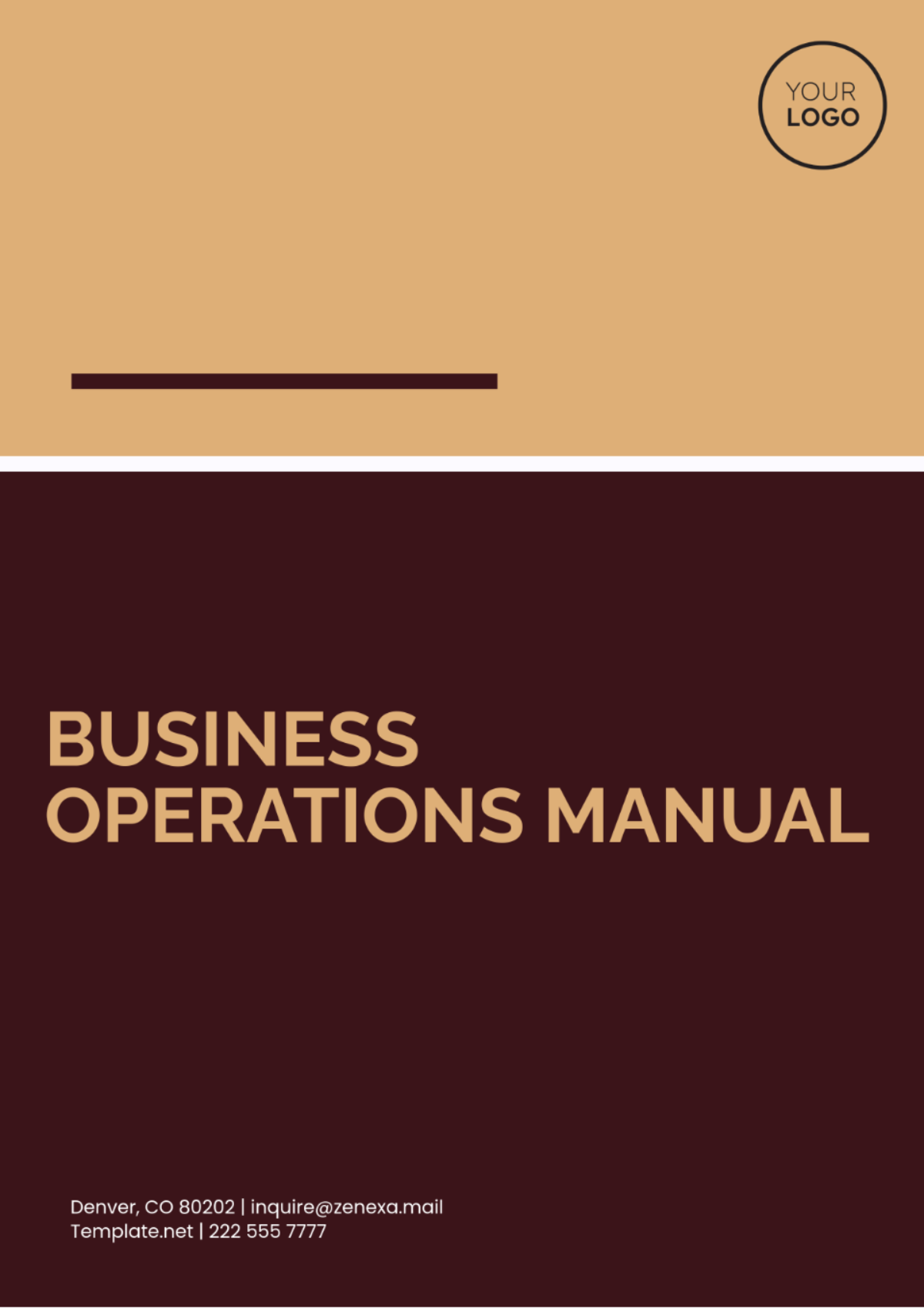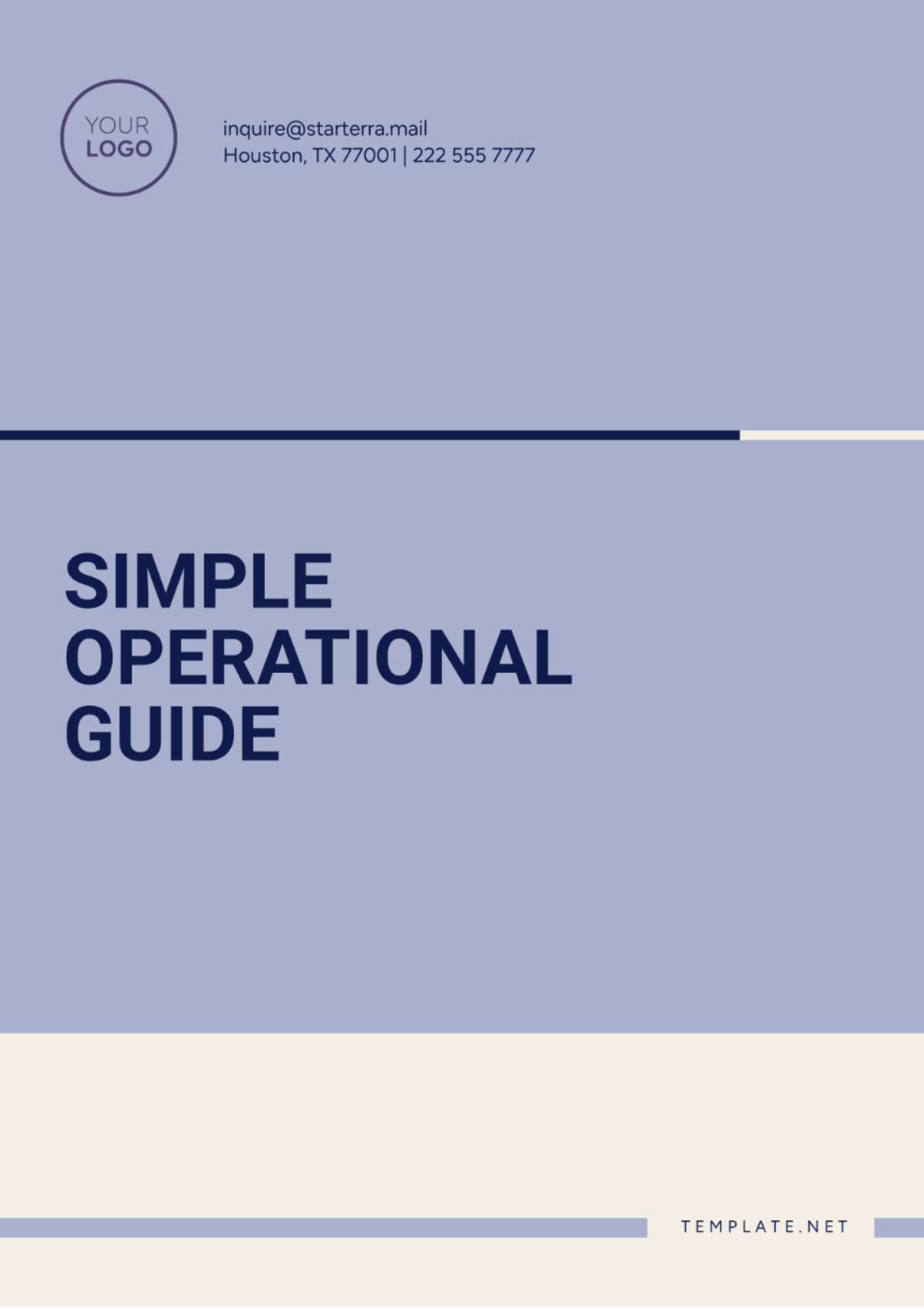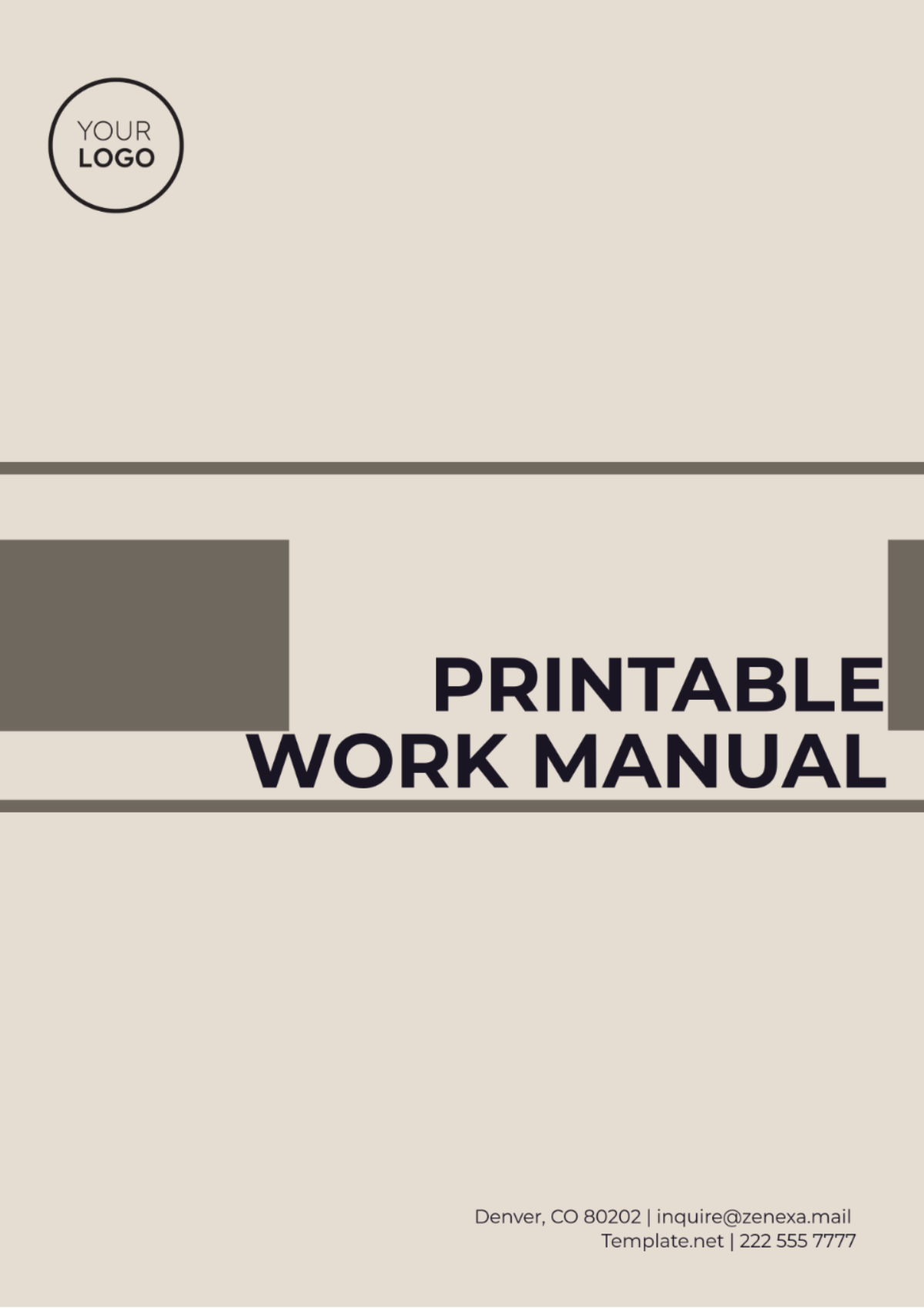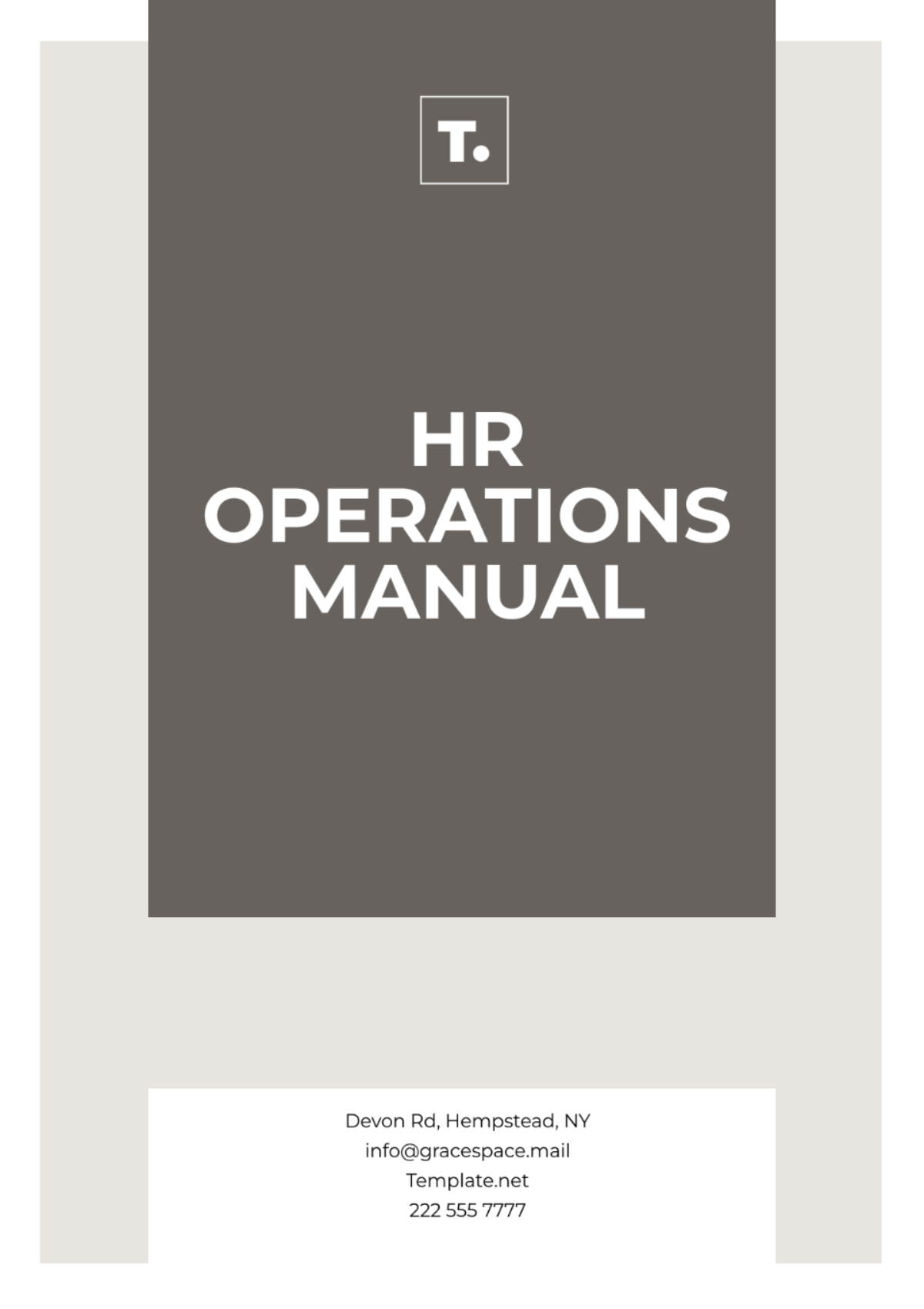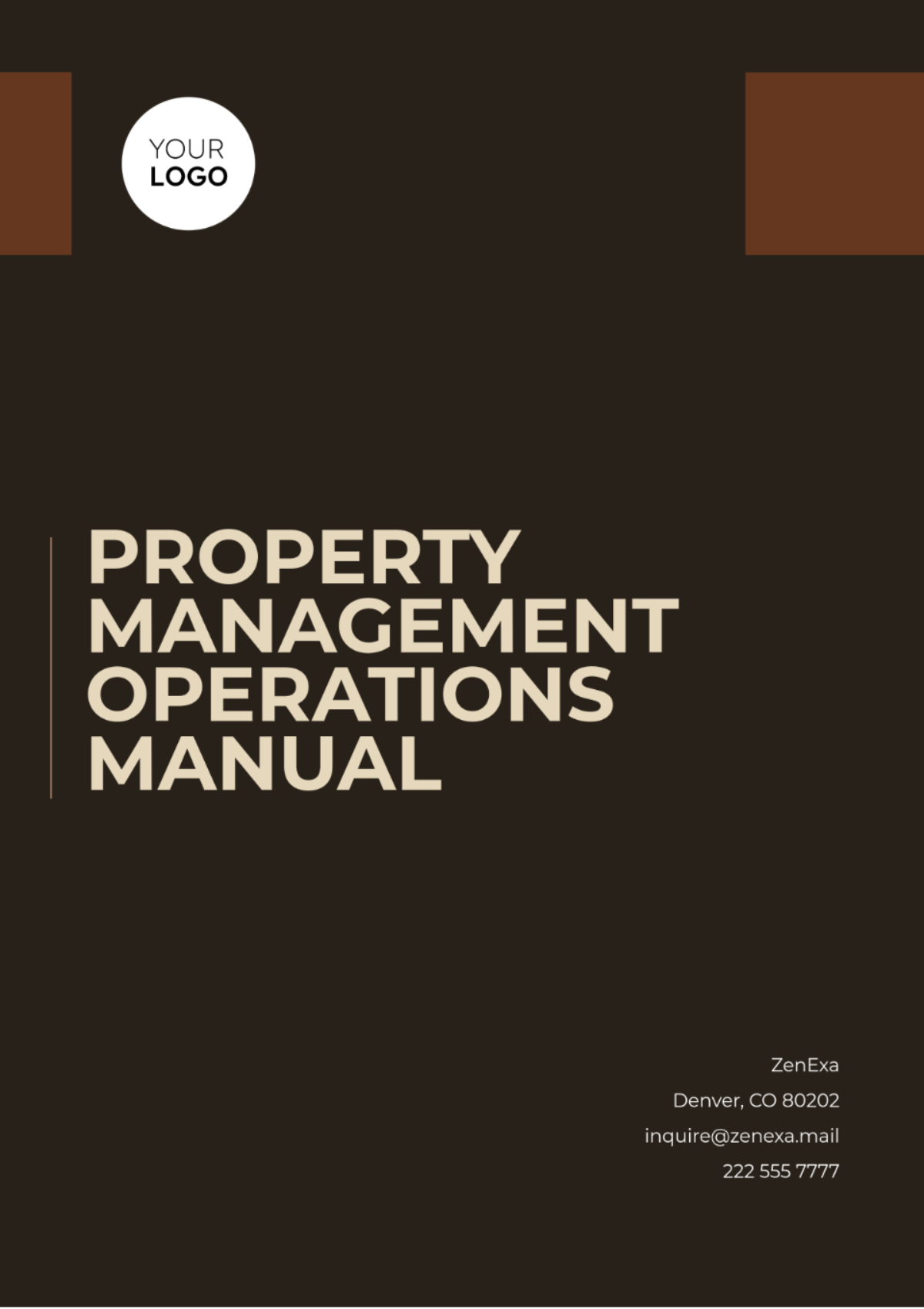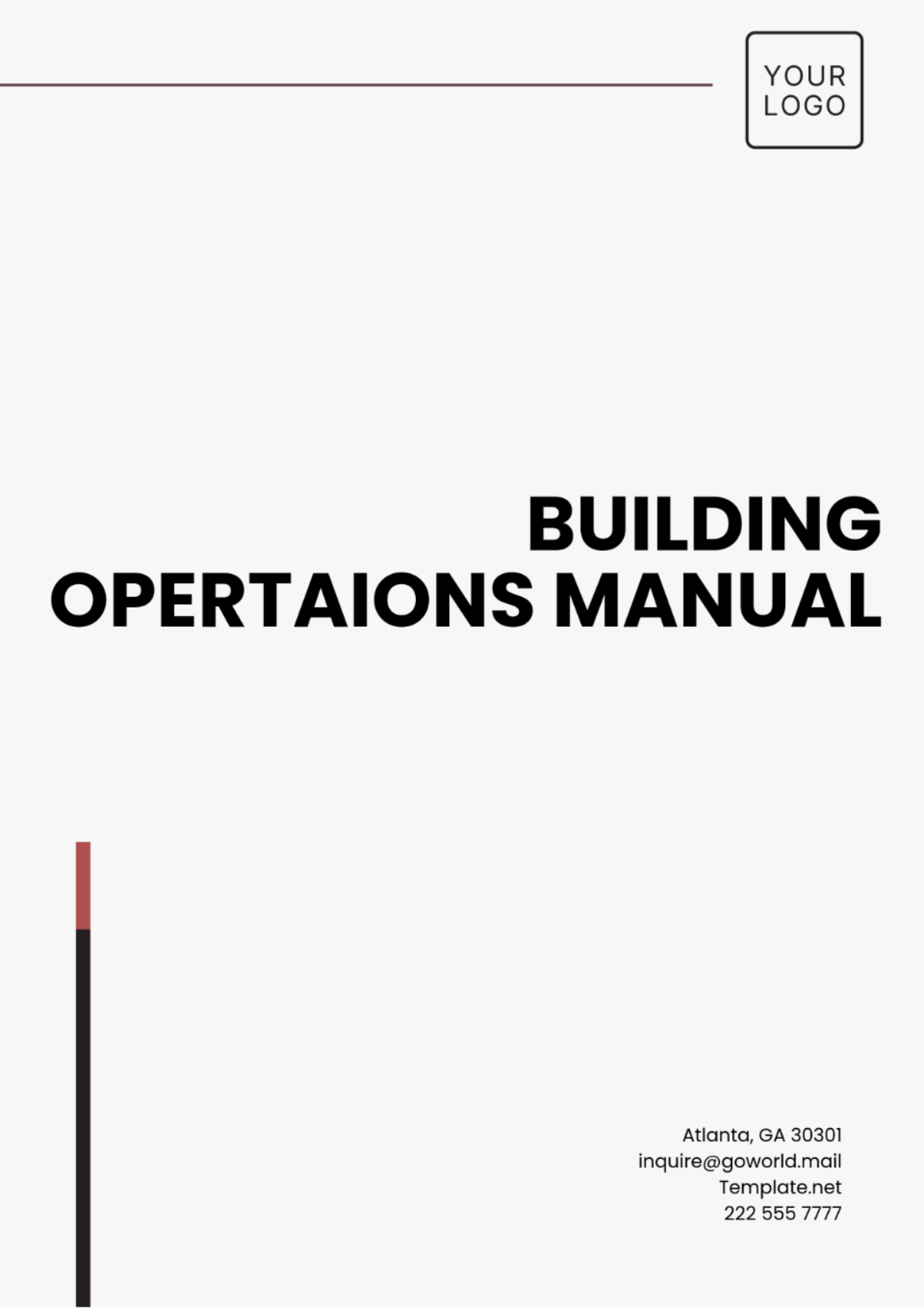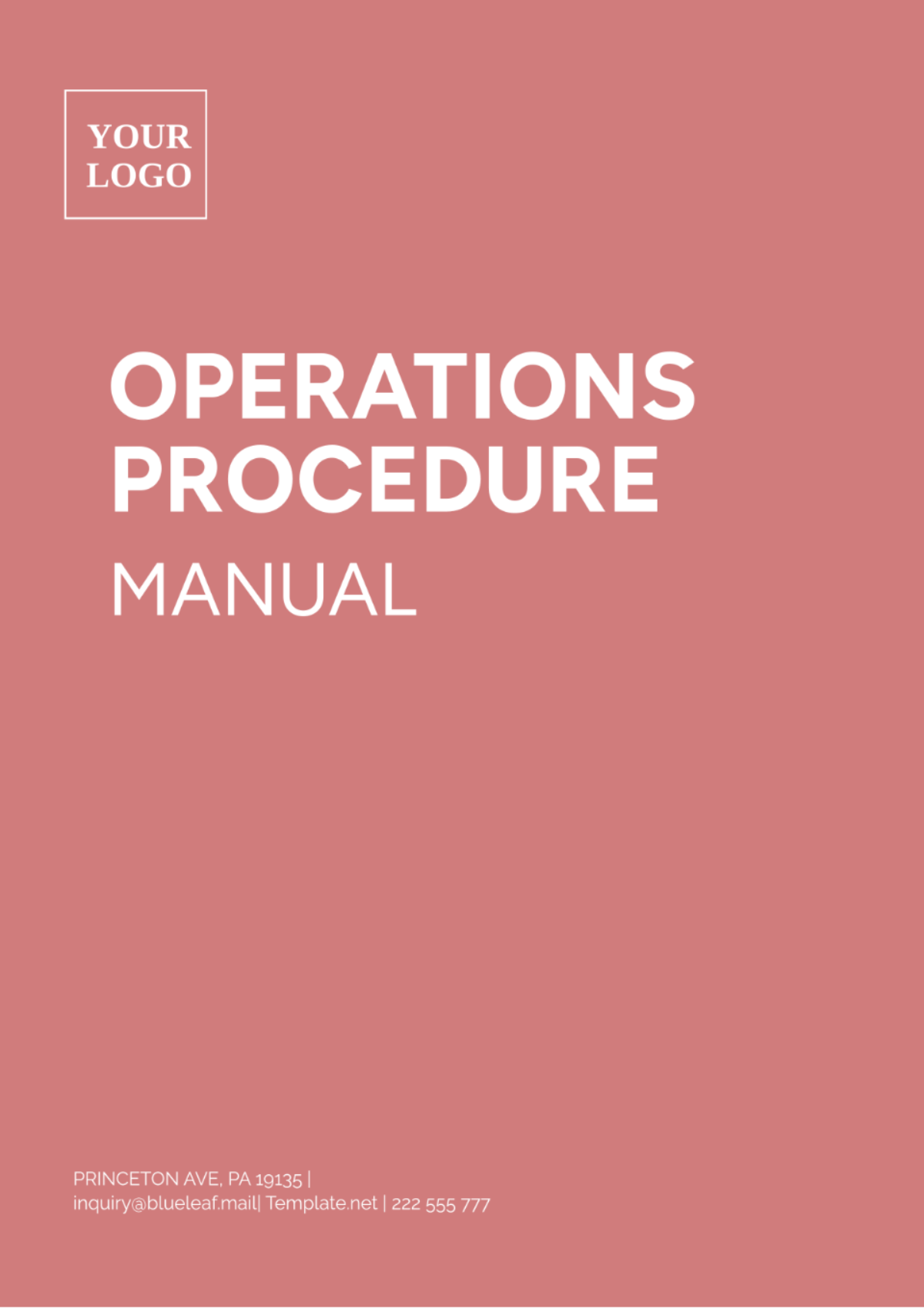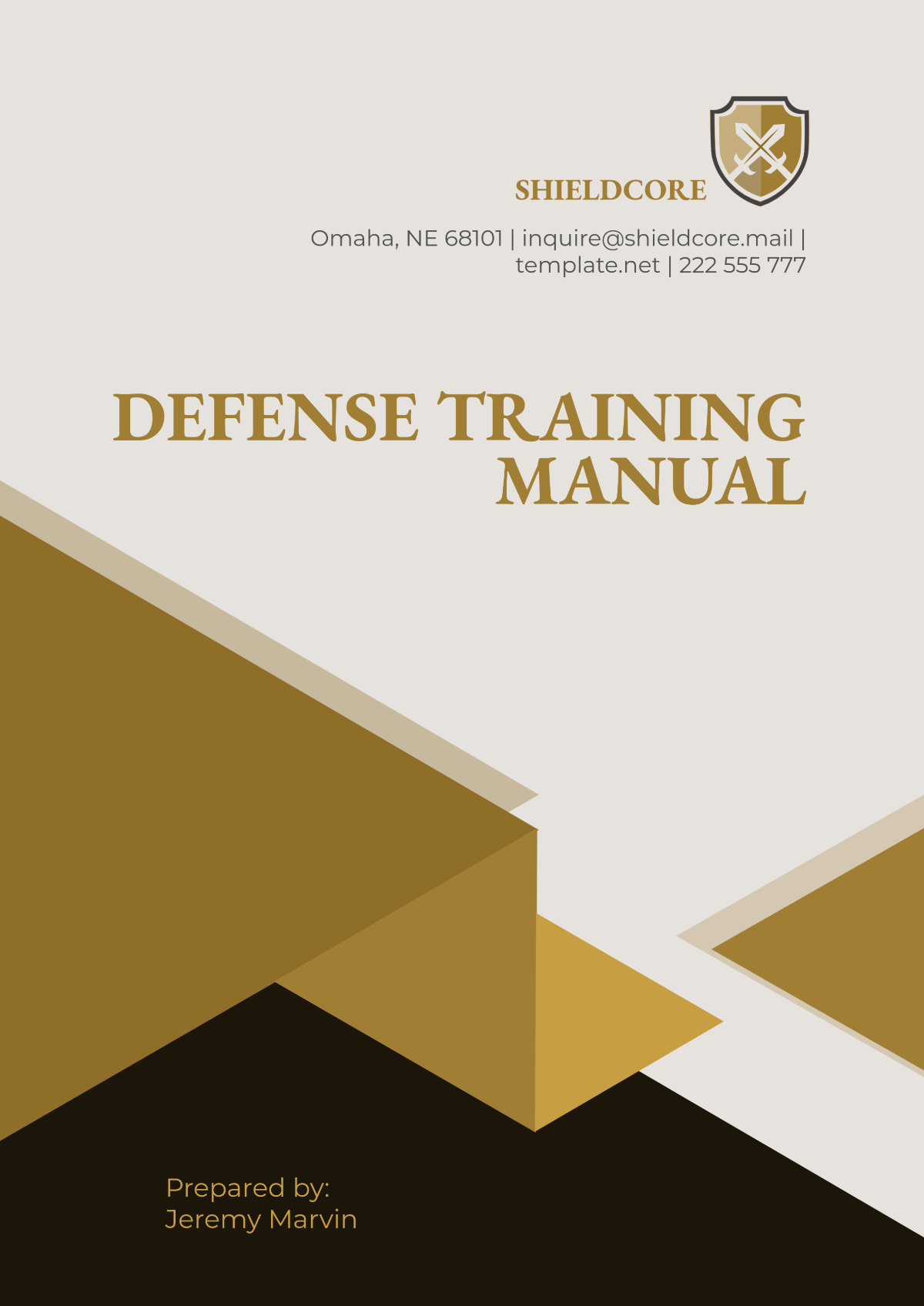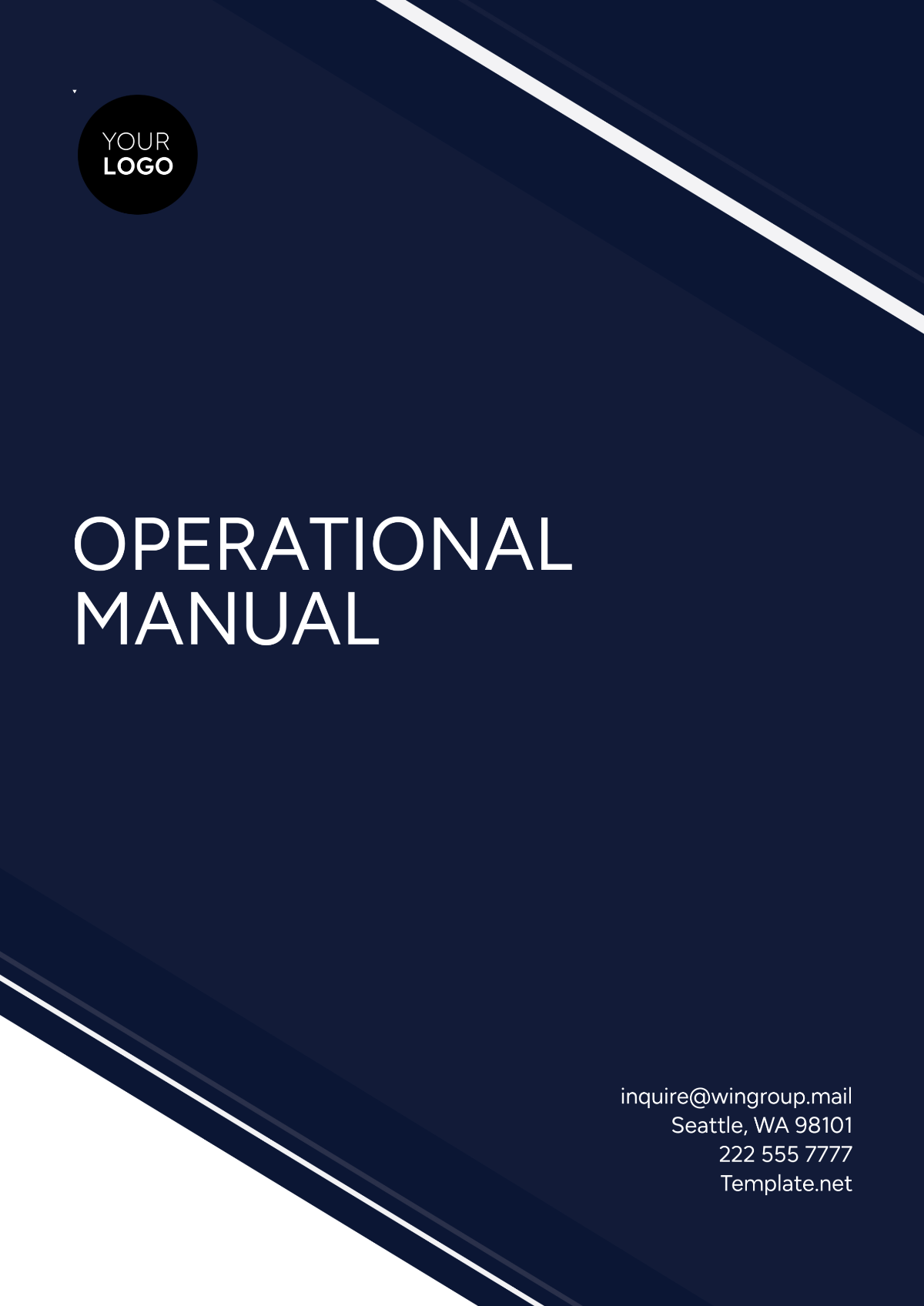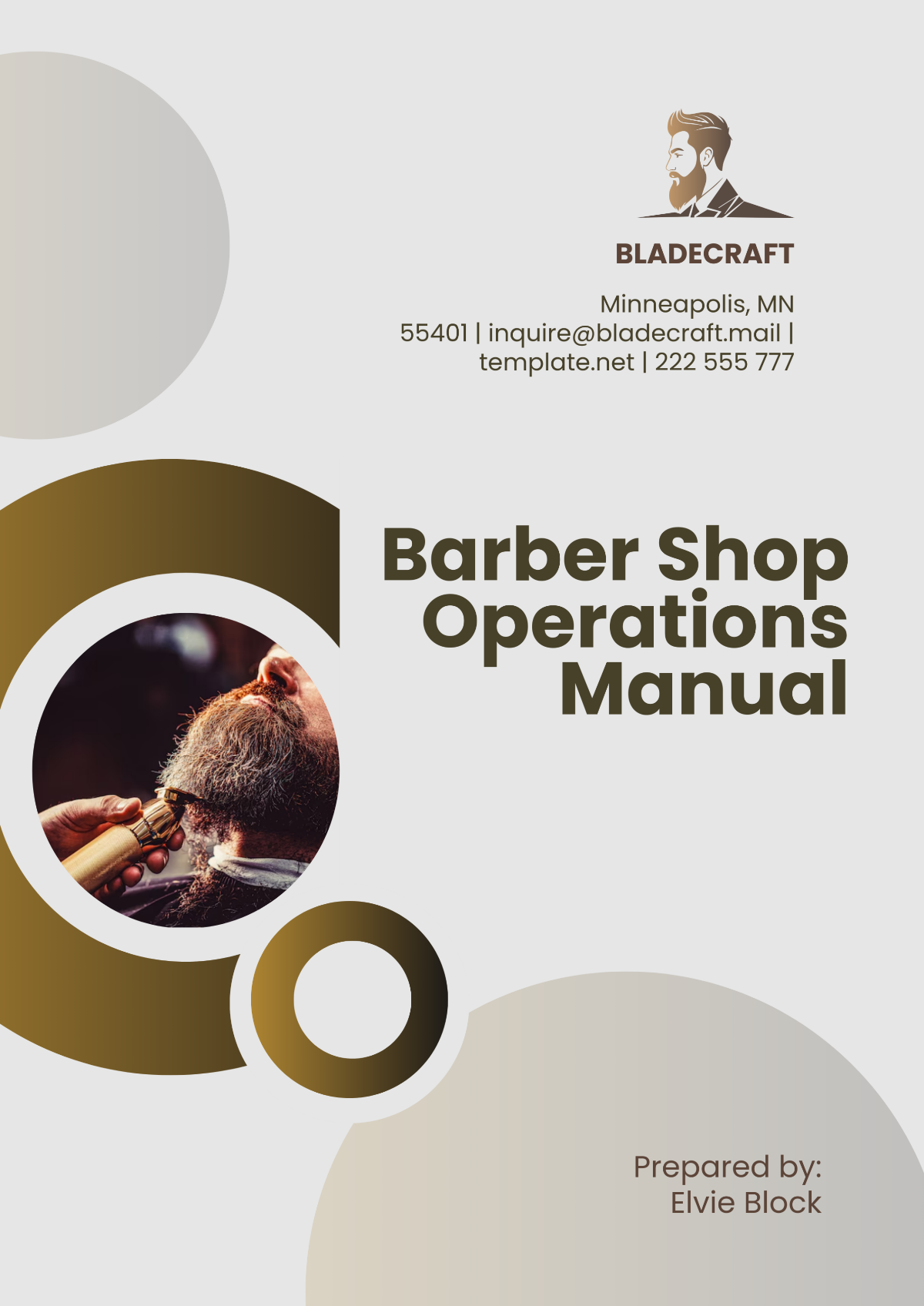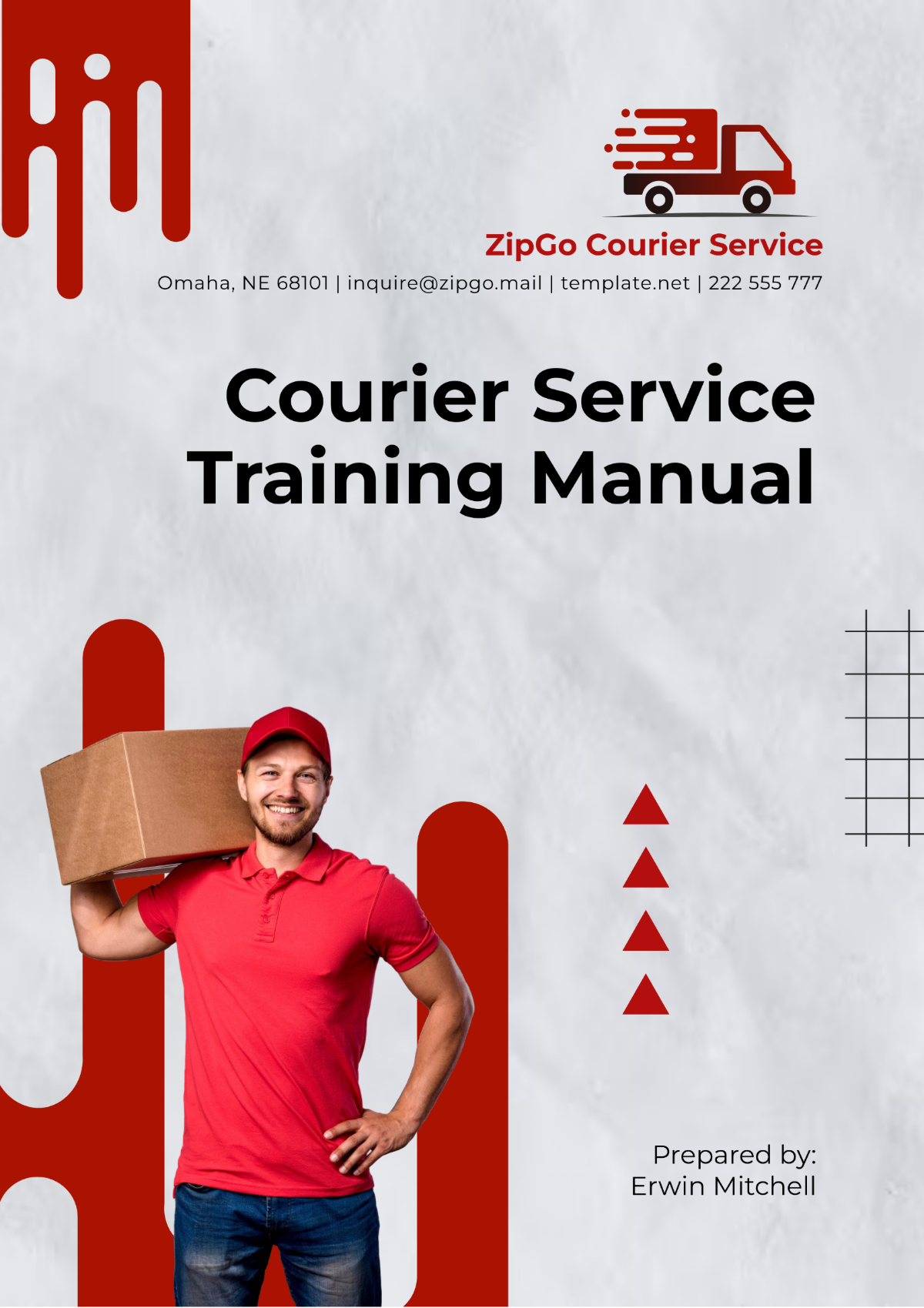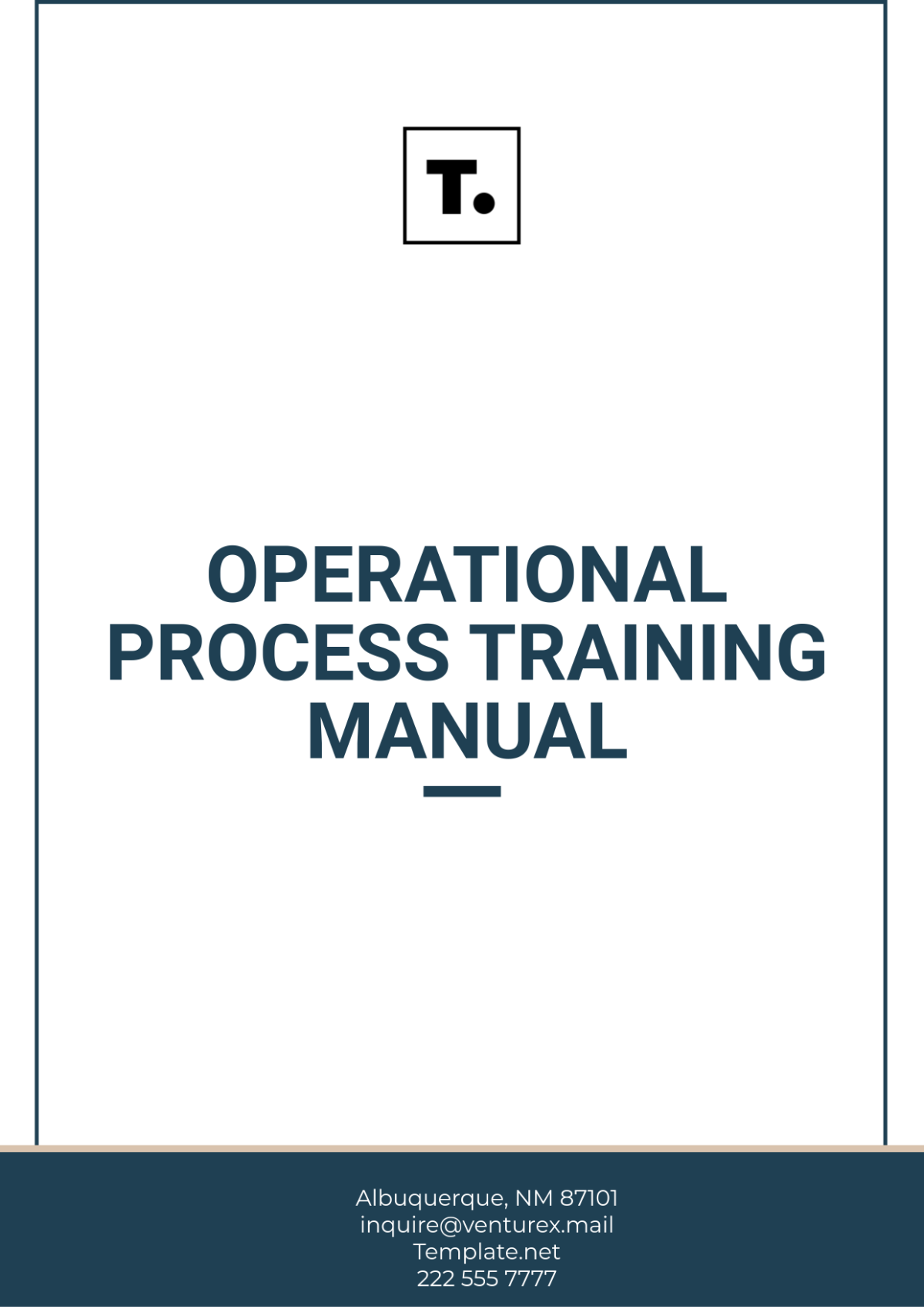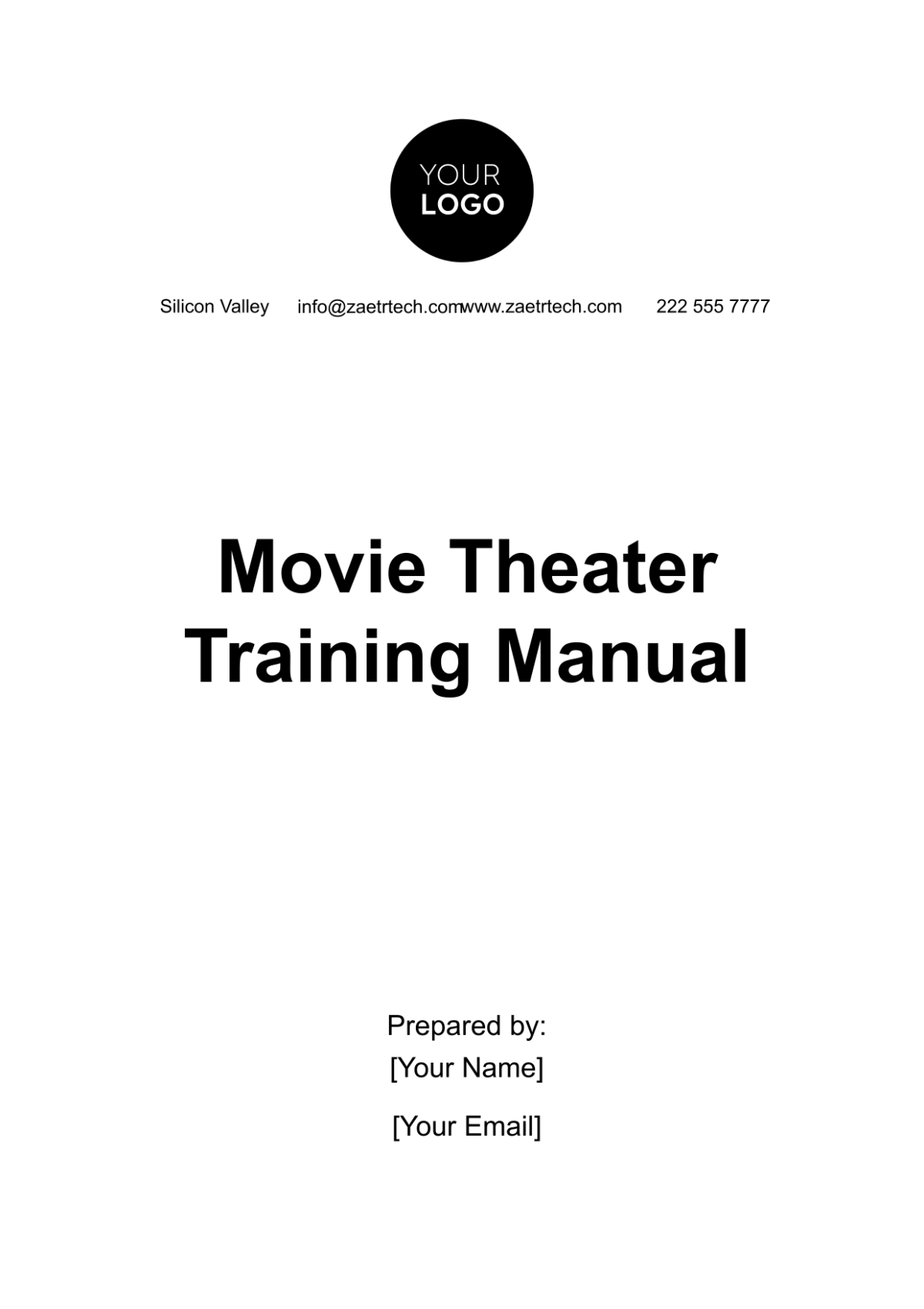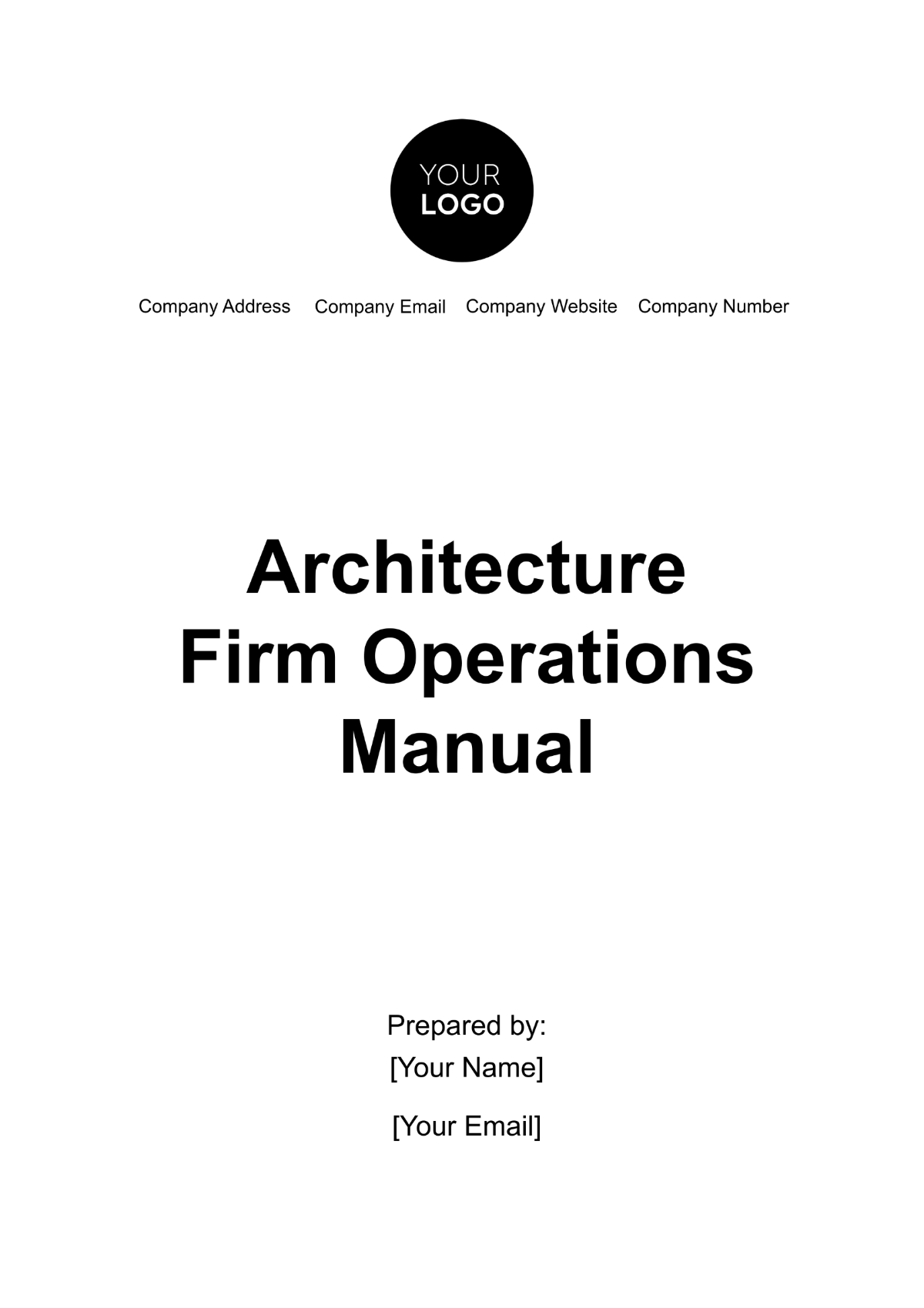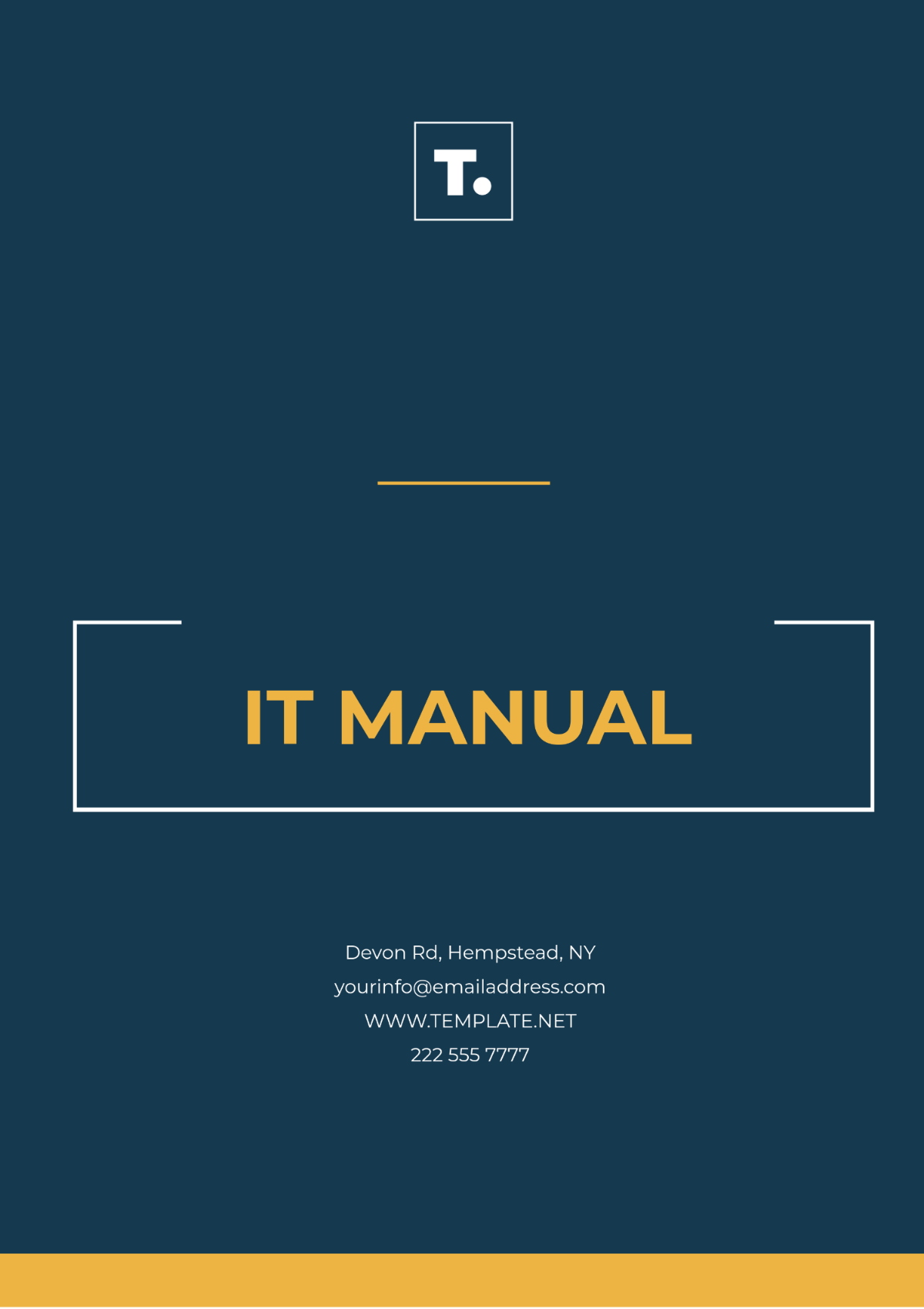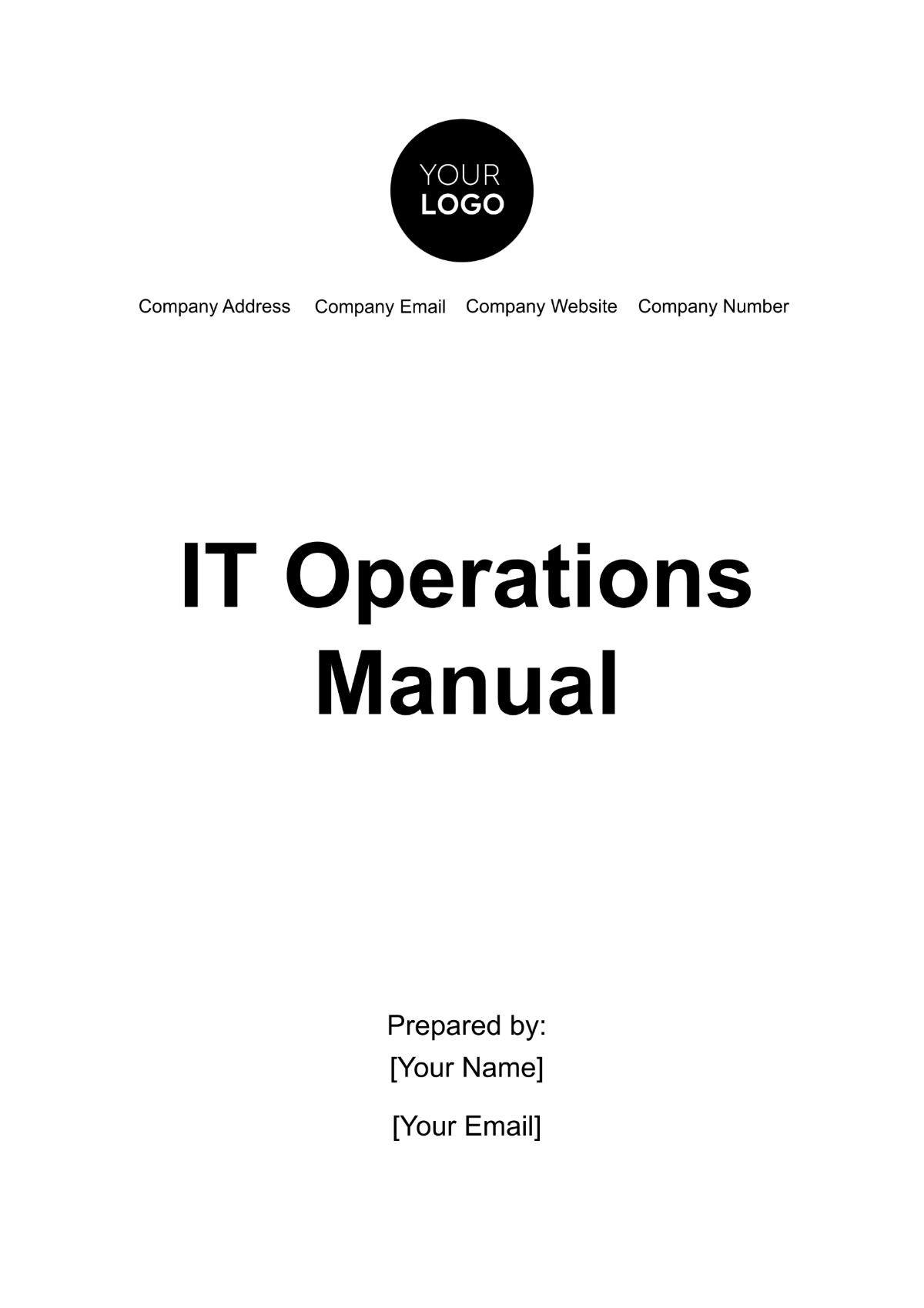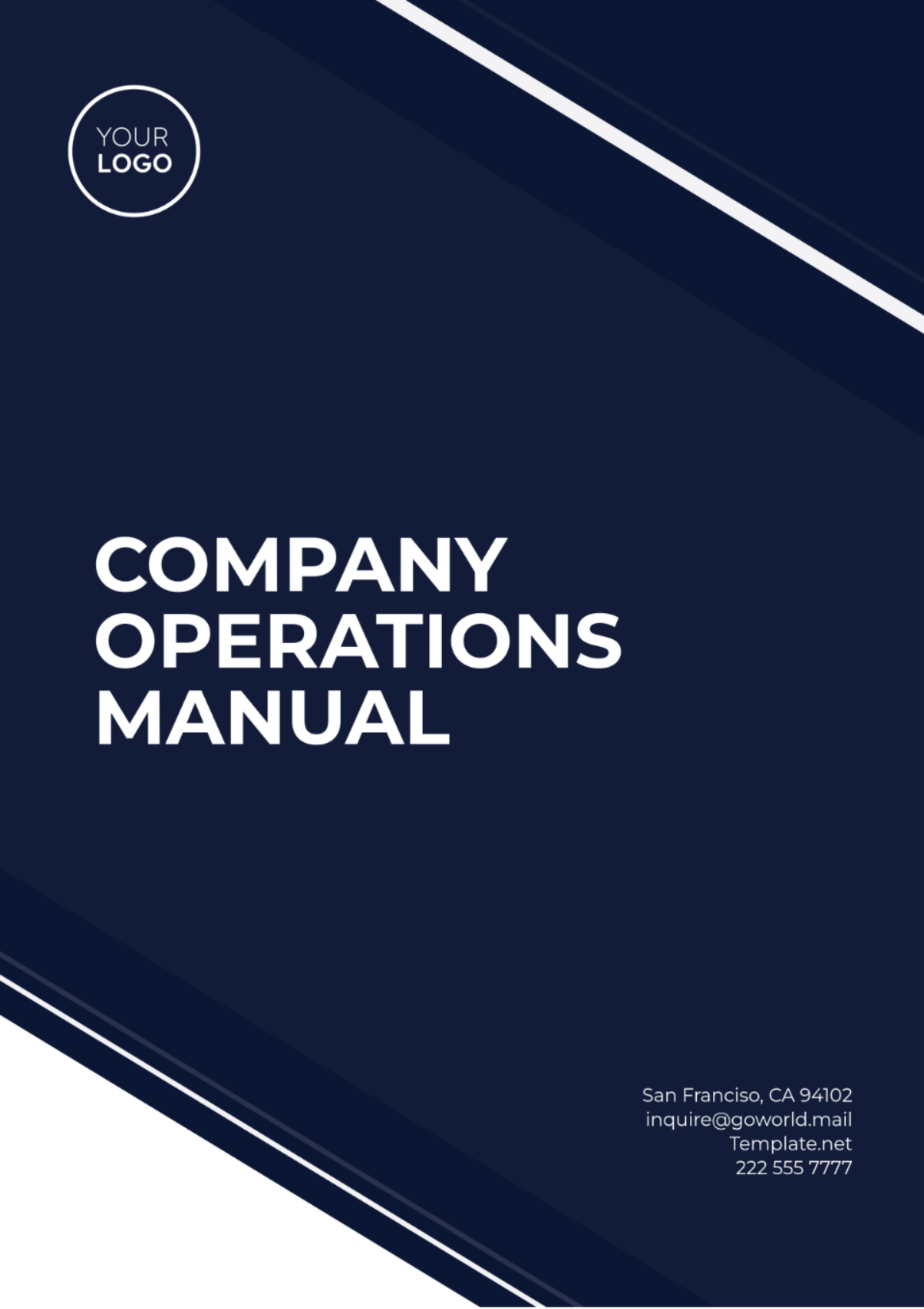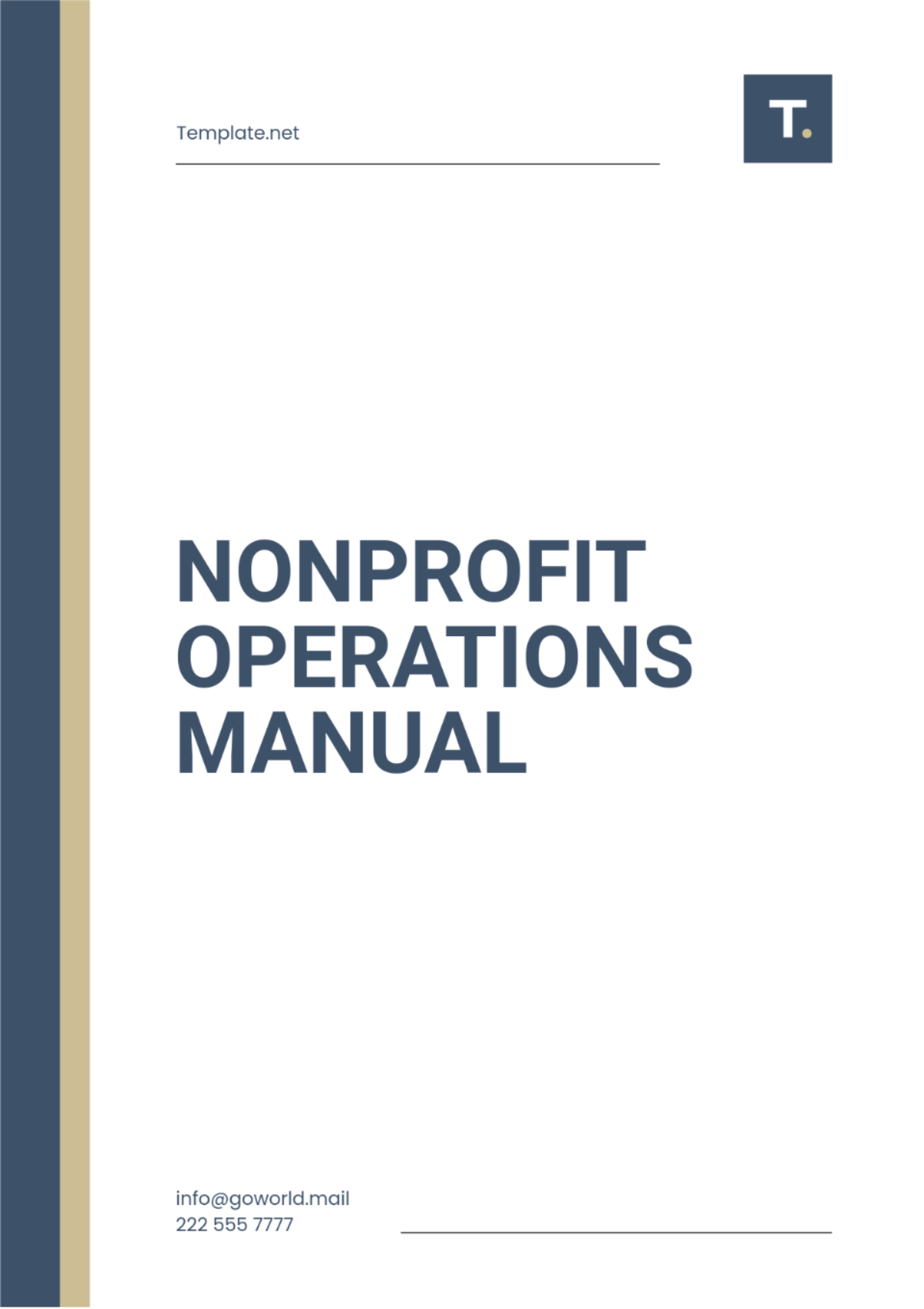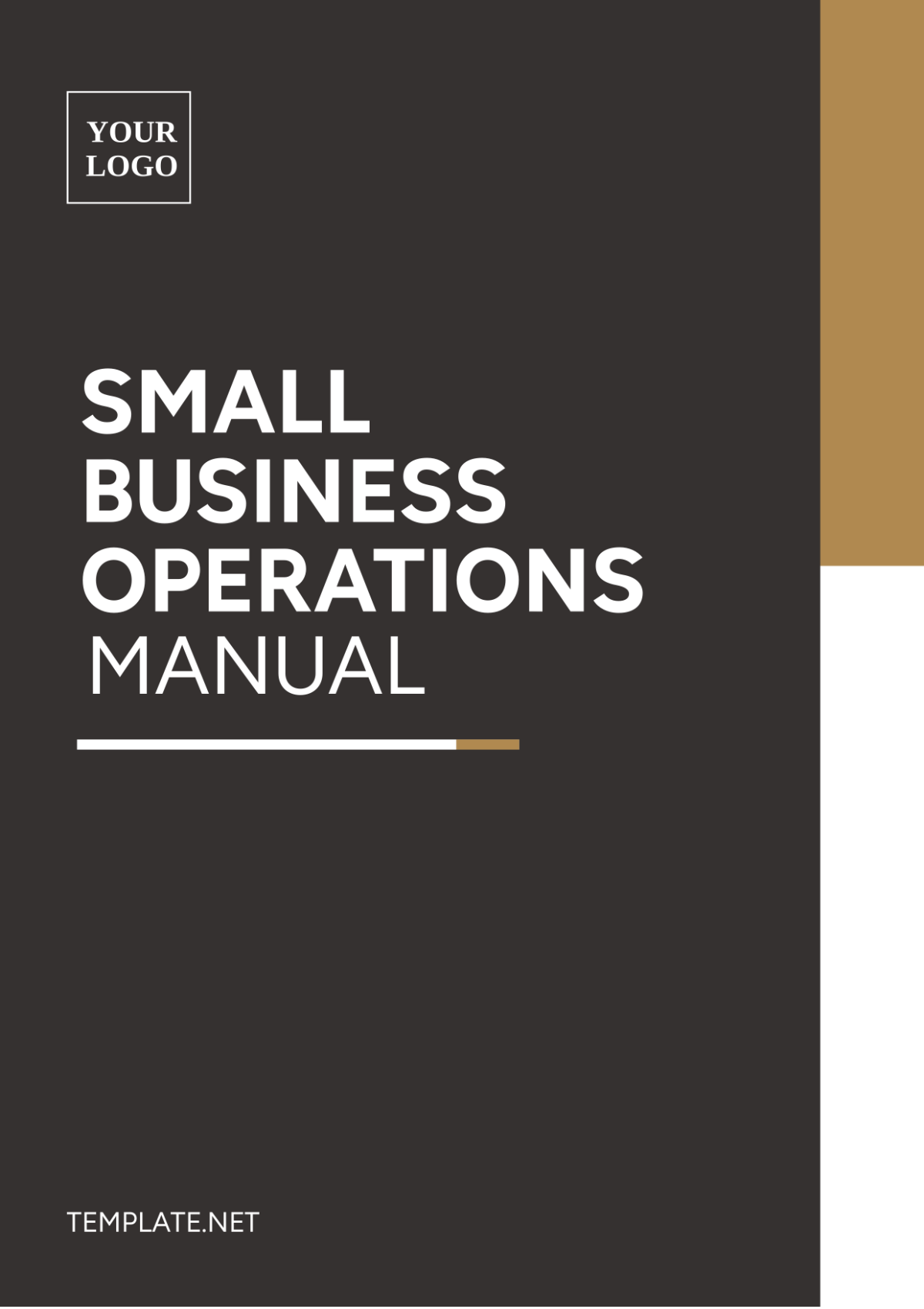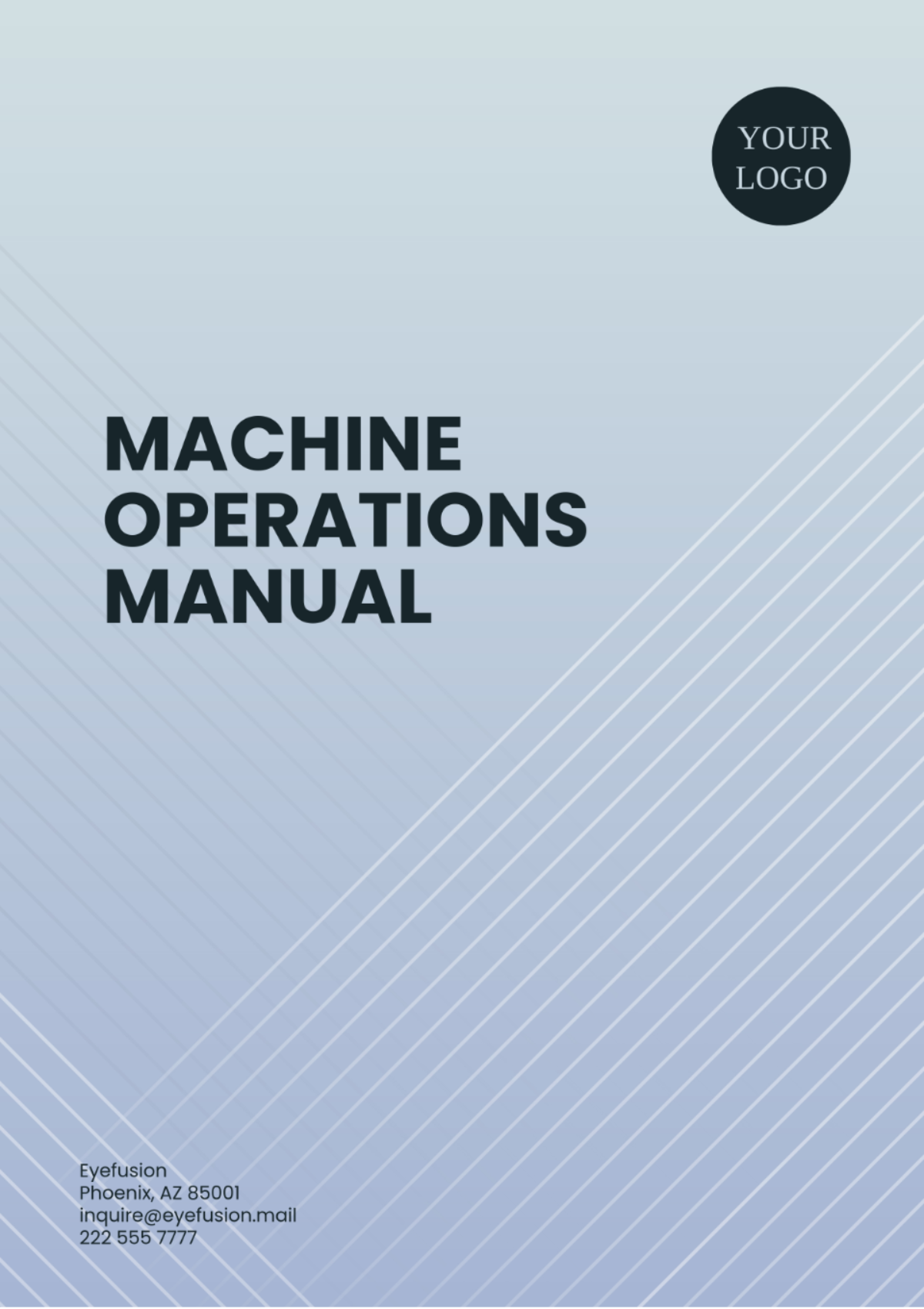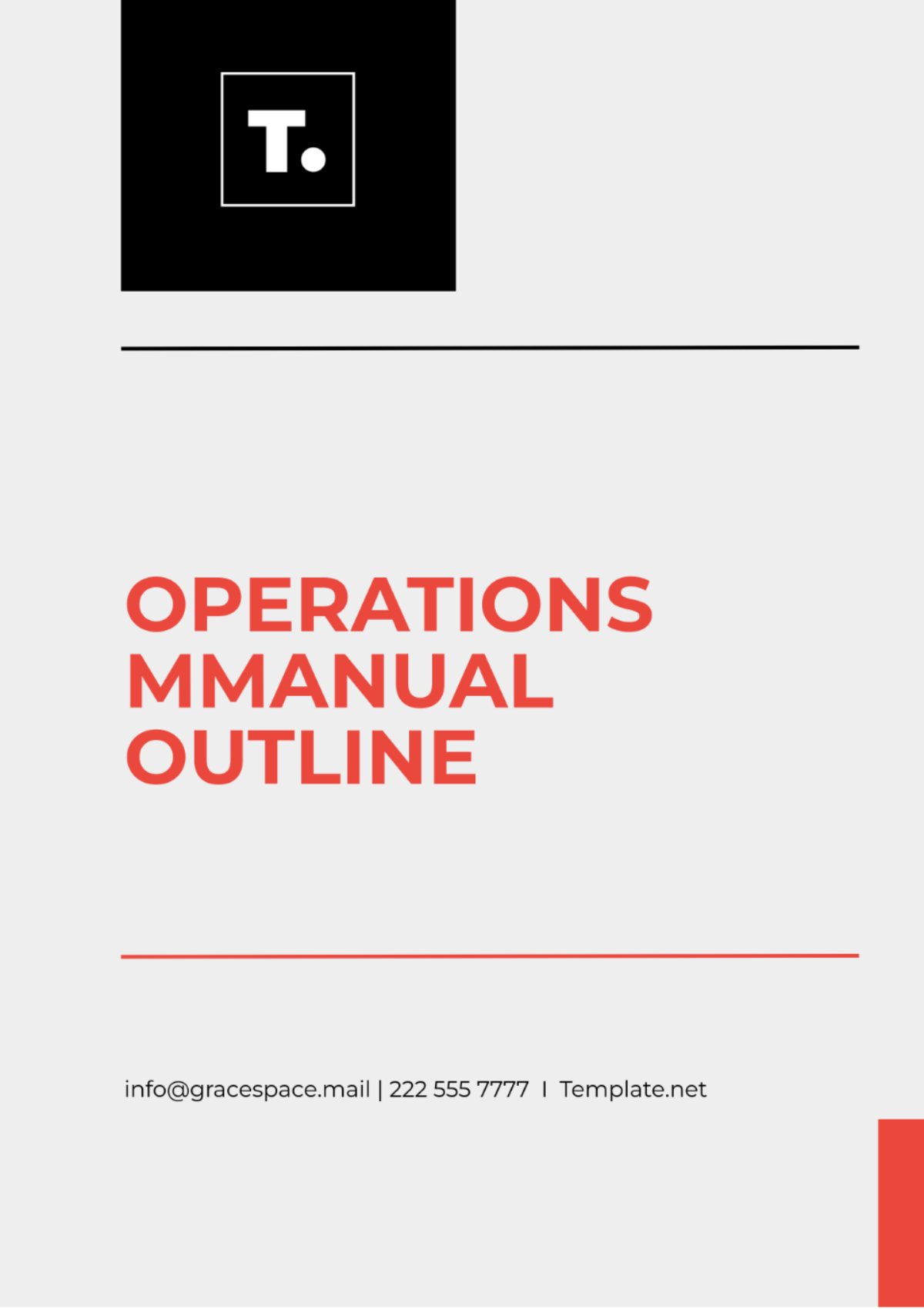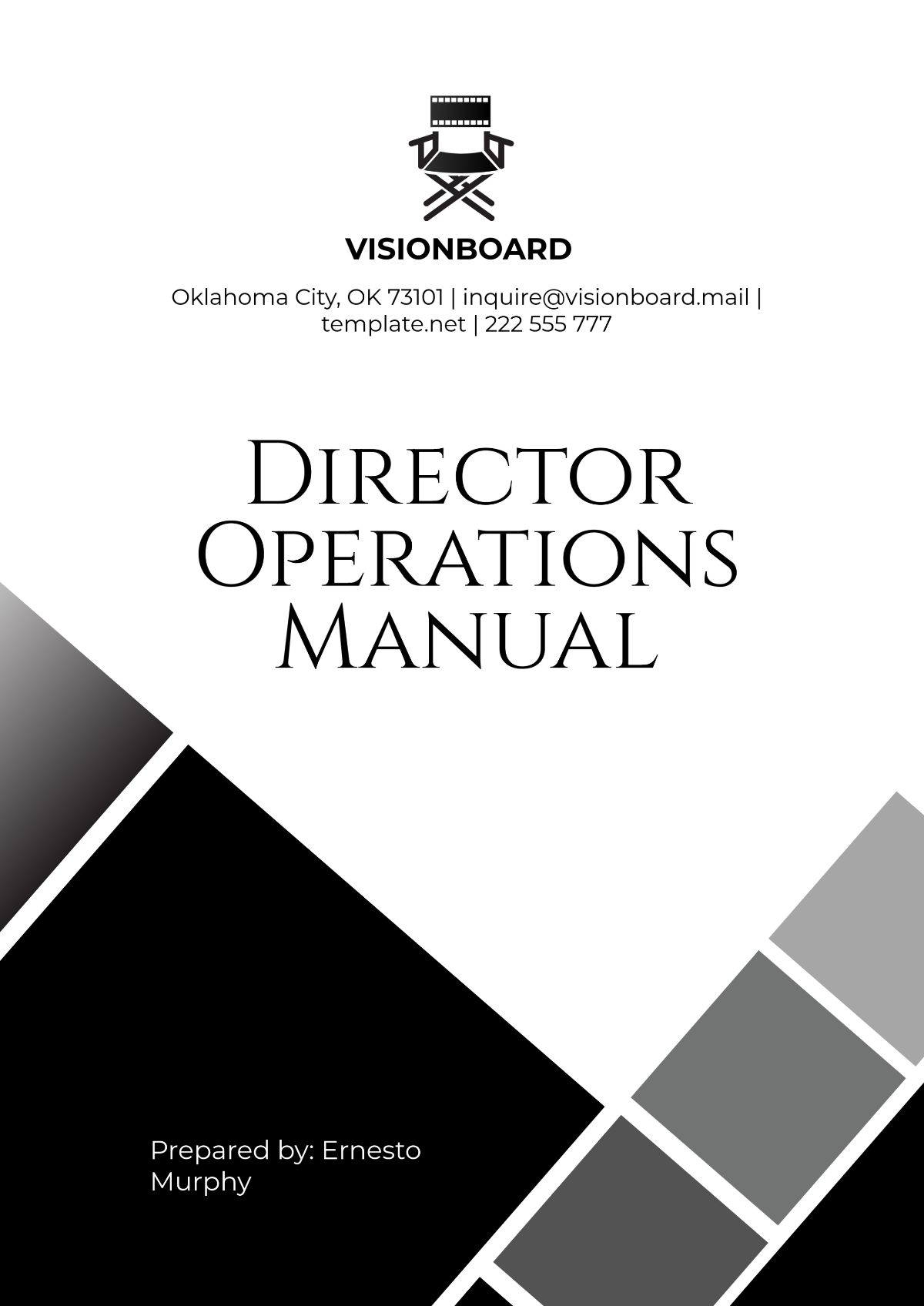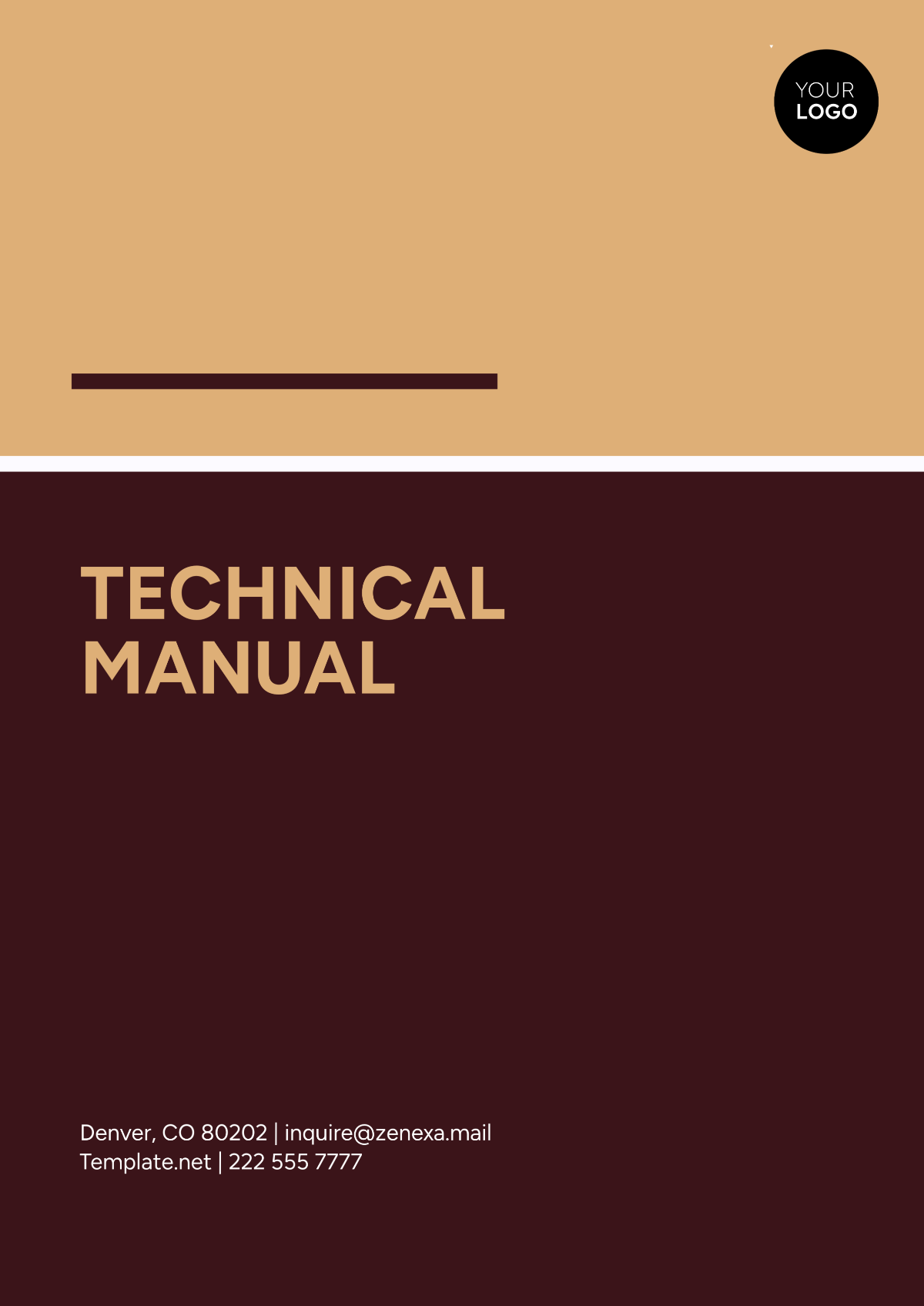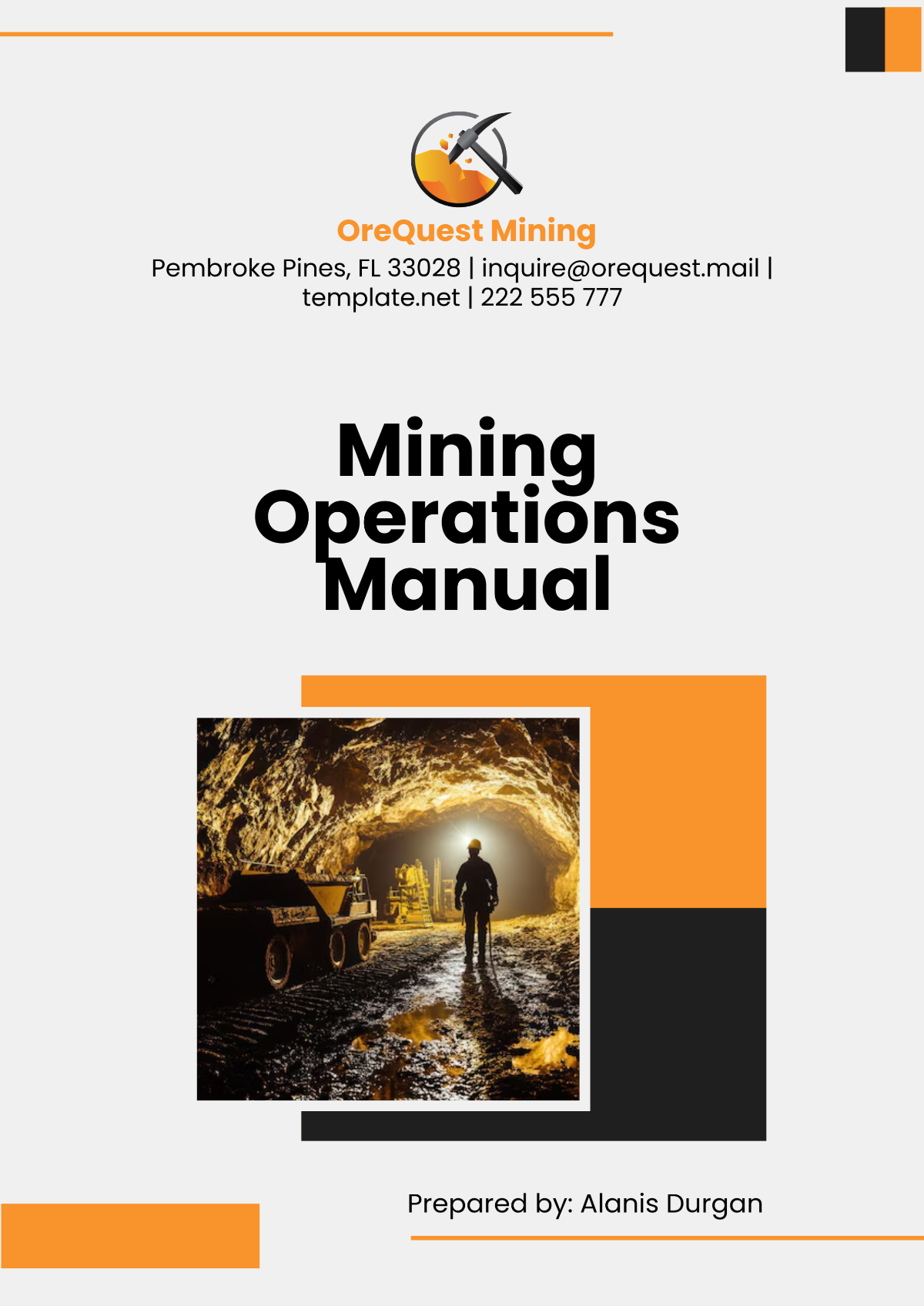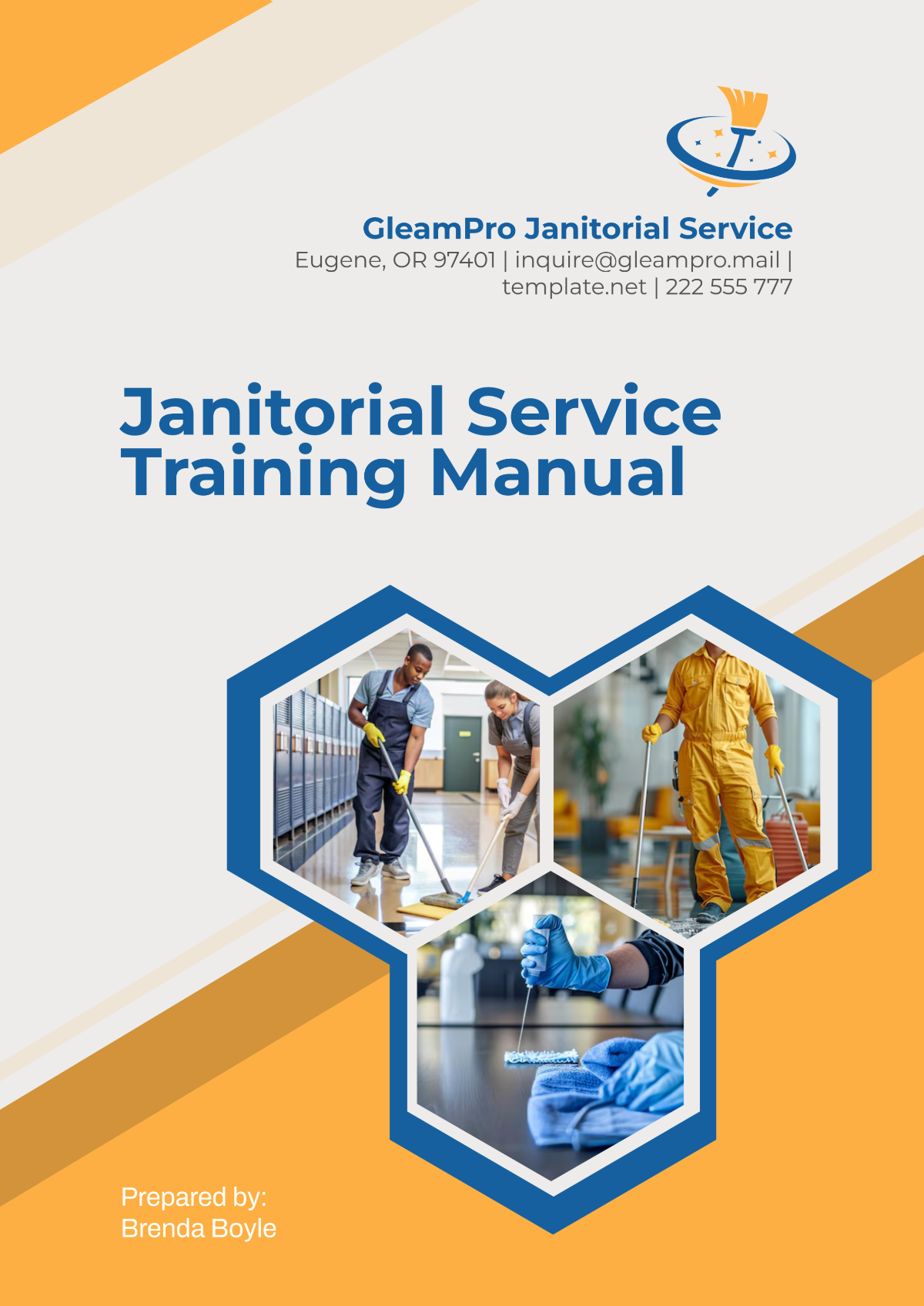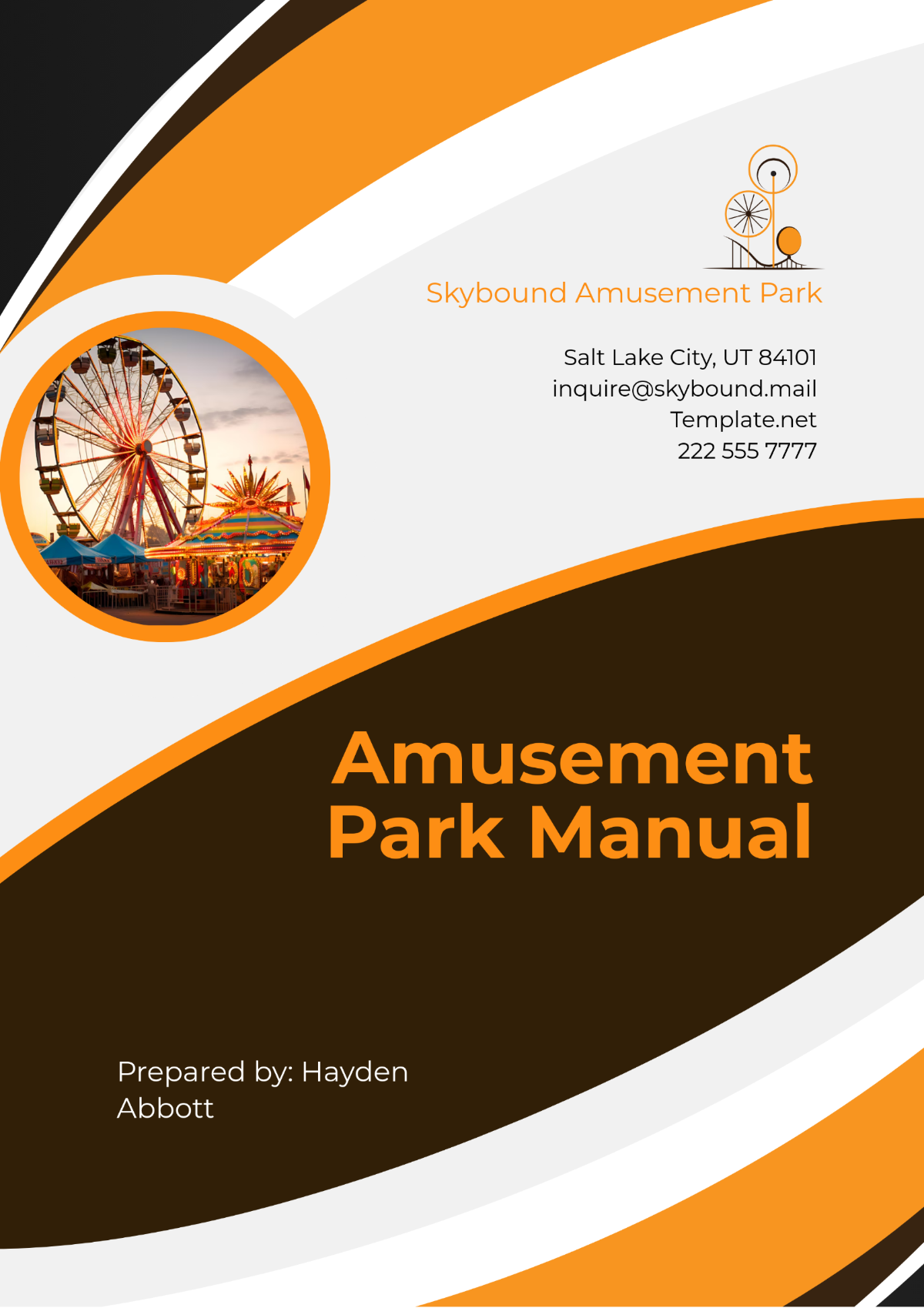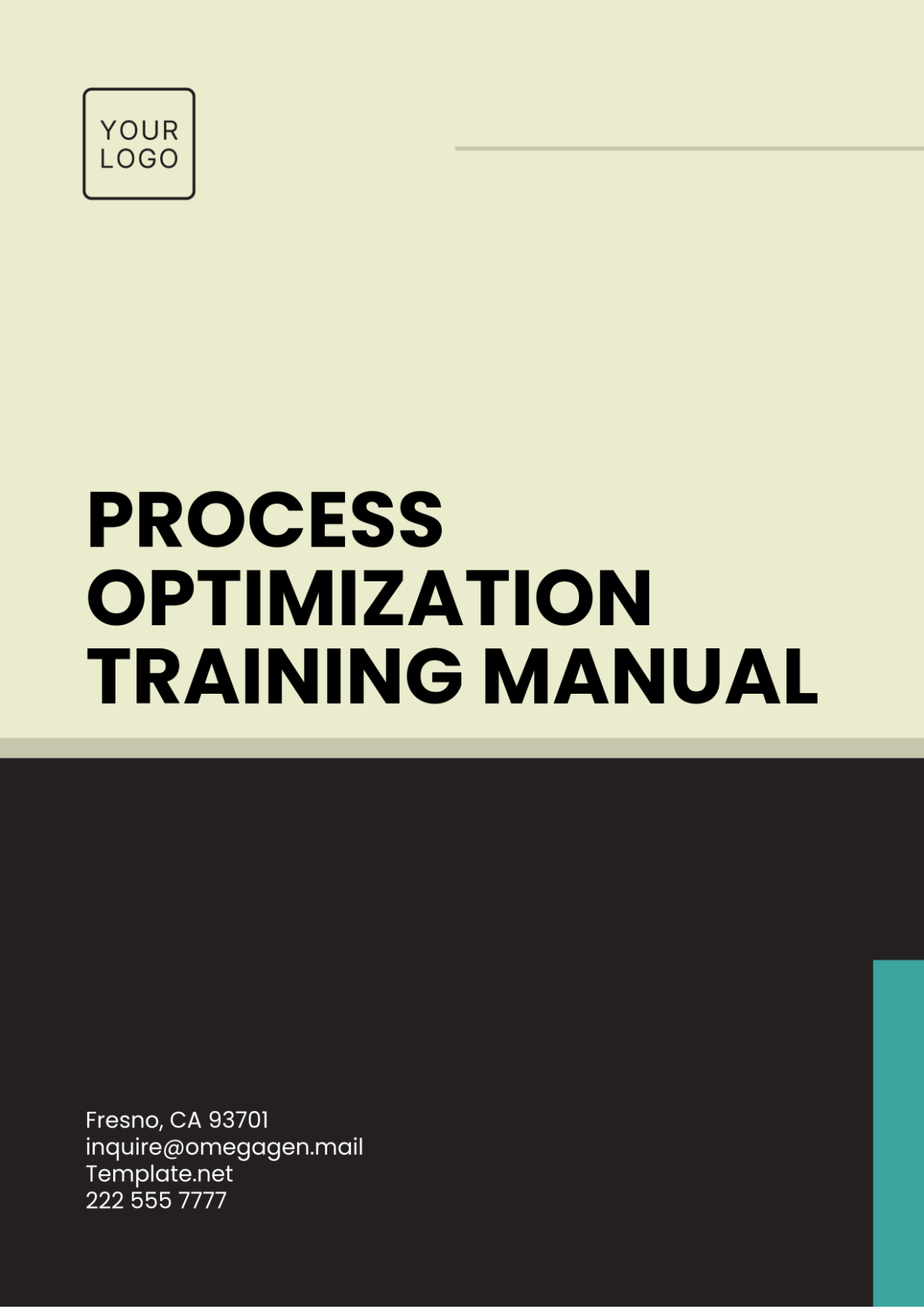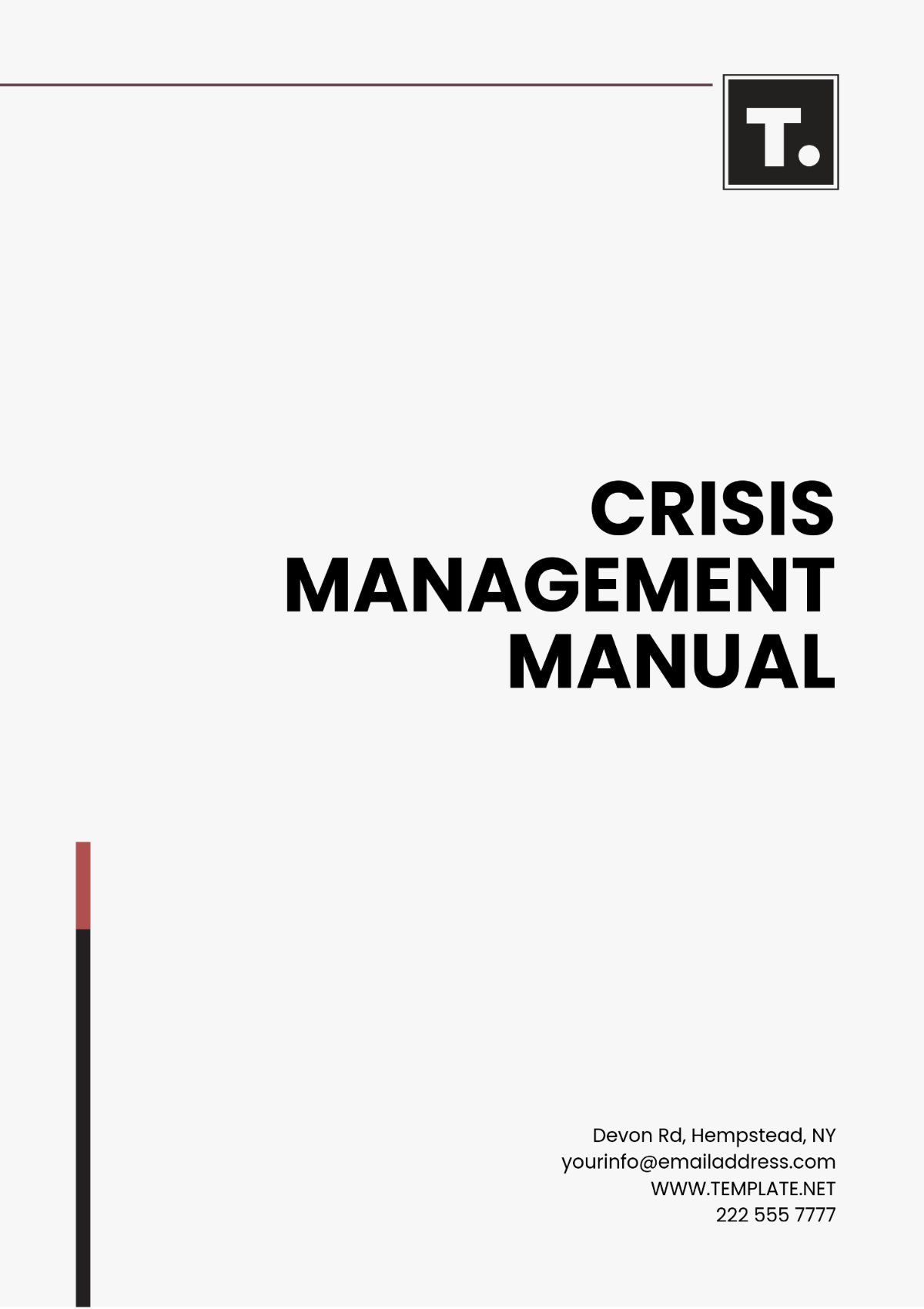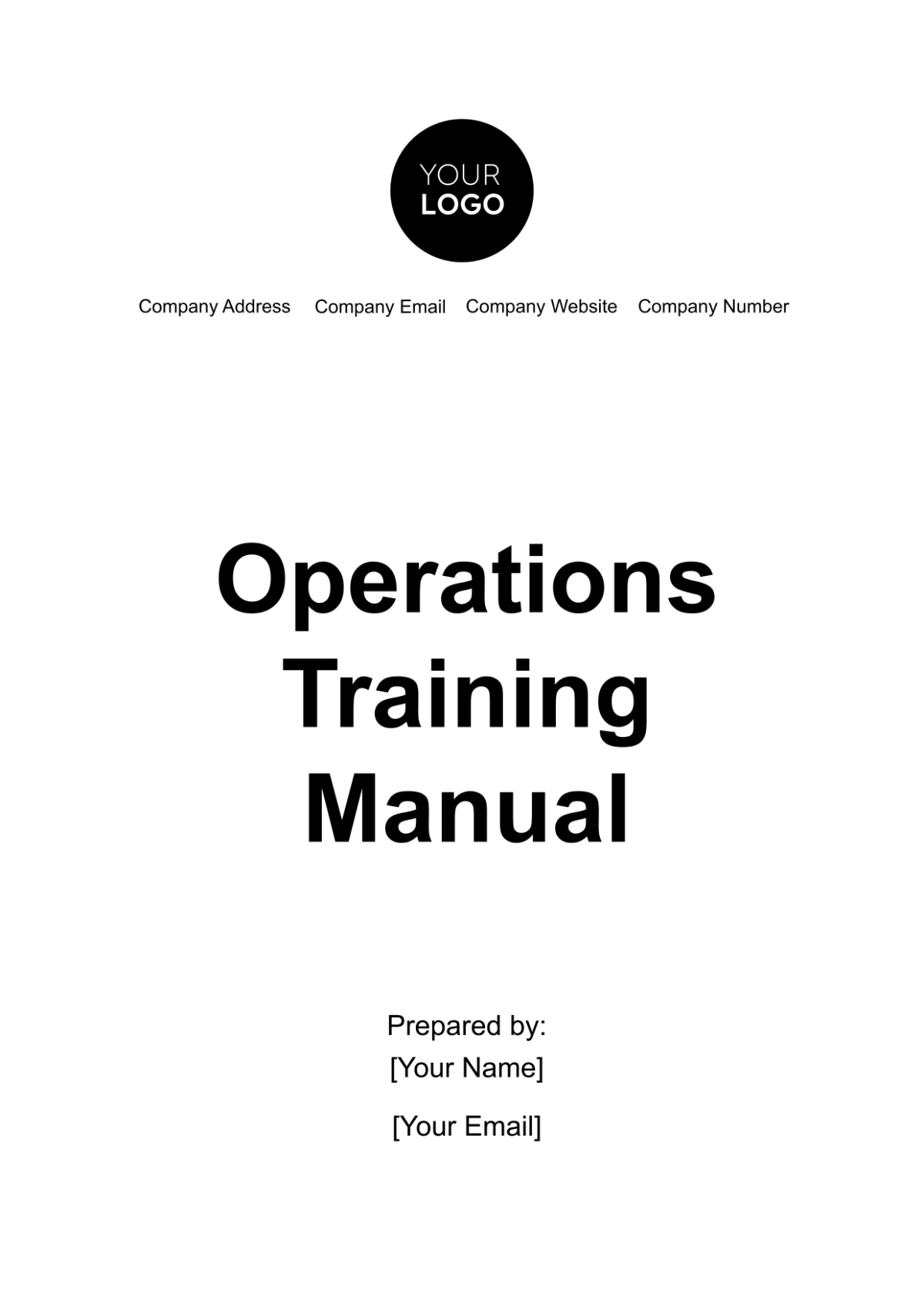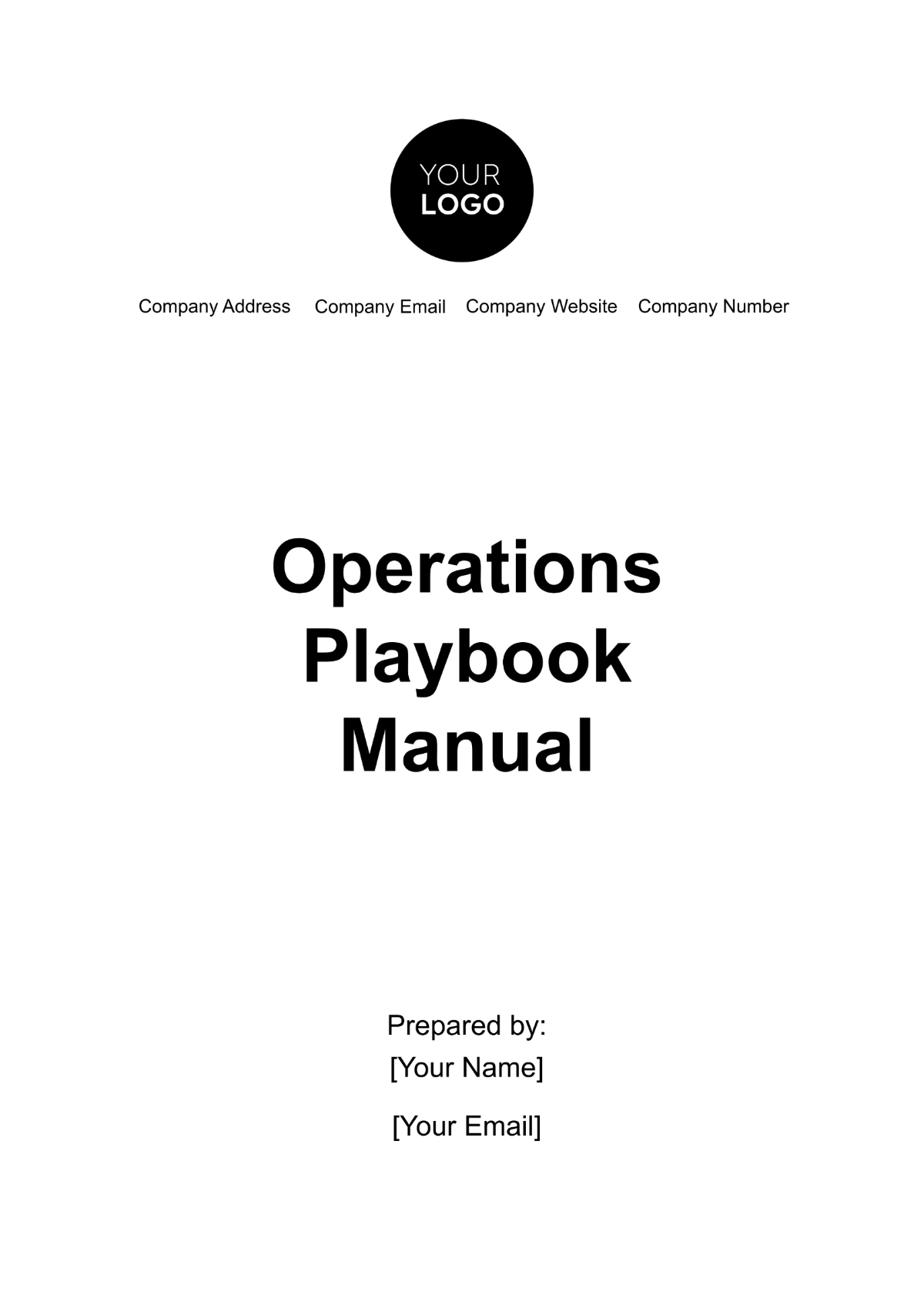Operations Training Manual
1. Introduction
1.1 Purpose of the Manual
The purpose of this Operations Training Manual is to provide comprehensive guidance on the procedures, protocols, and practices that are essential to the successful operation of [Your Company Name]. This manual serves as a foundational document that outlines the standards and expectations for all employees, ensuring consistency and efficiency across all departments. It is designed to support new hires during their onboarding process, as well as to serve as a reference guide for existing employees seeking to refresh their knowledge or adapt to new operational changes.
1.2 Scope
This manual covers all aspects of operations within [Your Company Name], including but not limited to organizational roles, standard operating procedures (SOPs), health and safety guidelines, quality control measures, and emergency protocols. The manual is applicable to all employees, regardless of their department or position within the company. It provides detailed instructions for both general operations and department-specific tasks, ensuring that all employees have access to the information they need to perform their duties effectively.
1.3 Training Objectives
The training objectives of this manual are to:
Ensure all employees are fully informed of their roles and responsibilities within the organization.
Provide clear and concise instructions on the standard operating procedures (SOPs) that must be followed in day-to-day operations.
Promote a culture of safety, quality, and continuous improvement within the company.
Equip employees with the knowledge and skills necessary to utilize company tools and technology effectively.
Prepare employees to respond appropriately to emergencies and other unexpected situations.
2. Company Overview
2.1 History of [Your Company Name]
[Your Company Name] was established in 2050 with the goal of revolutionizing [industry]. From its humble beginnings as a small startup, the company has grown into a global leader in the field, known for its innovative products and commitment to customer satisfaction. Over the years, [Your Company Name] has expanded its operations to multiple locations worldwide, maintaining its core values while adapting to the ever-changing market landscape.
2.2 Vision and Mission Statements
Vision: To be the leading provider of innovative technology solutions worldwide, recognized for our unwavering commitment to quality, cutting-edge innovation, and unparalleled customer satisfaction. Our goal is to shape the future of technology by pioneering advancements that enhance the way people live and work, creating lasting value for our clients and stakeholders. Through excellence in product development and customer service, we aspire to set new industry standards and inspire others to achieve greatness.
Mission: Our mission is to deliver high-quality technology solutions that not only meet but exceed the expectations of our customers. We are dedicated to fostering a culture of continuous improvement and sustainability within our operations, ensuring that every product and service we offer contributes to a better, more efficient world. By leveraging our expertise, embracing innovation, and maintaining a relentless focus on customer needs, we aim to build long-lasting partnerships and drive progress in the technology sector. Our commitment to excellence ensures that we deliver exceptional value and create positive impacts for our clients, employees, and communities.
2.3 Core Values
Integrity: We conduct our business with honesty and transparency, building trust with our customers, employees, and stakeholders.
Innovation: We embrace creativity and innovation, continuously seeking new ways to improve our products, services, and processes.
Excellence: We strive for excellence in everything we do, setting high standards and working diligently to meet and exceed them.
Sustainability: We are committed to sustainability, ensuring that our operations have a positive impact on the environment and society.
3. Roles and Responsibilities
3.1 Organizational Structure
The organizational structure of [Your Company Name] is designed to facilitate efficient communication and collaboration across all departments. The company is led by the Executive Leadership Team, which includes the CEO, COO, CFO, and other key executives. Each department is headed by a Director, who is responsible for overseeing the department's operations and ensuring alignment with the company's strategic goals.
Position | Responsibilities |
|---|---|
CEO | Overall company strategy, decision-making, and leadership. |
COO | Day-to-day operations, process optimization, and resource management. |
CFO | Financial planning, budgeting, and financial performance management. |
Department Directors | Departmental strategy, operations, and performance management. |
Managers | Team leadership, task delegation, and performance monitoring within departments. |
Employees | Execution of assigned tasks, adherence to SOPs, and contribution to company goals. |
3.2 Departmental Roles
Each department within [Your Company Name] plays a critical role in achieving the company's overall objectives. The following is an overview of the key departments and their primary responsibilities:
Operations Department: Manages the production and delivery of products/services, ensuring efficiency and quality.
Sales and Marketing Department: Develops and executes strategies to attract and retain customers, driving revenue growth.
Finance Department: Oversees financial planning, budgeting, and reporting, ensuring the company's financial health.
Human Resources Department: Manages employee recruitment, training, and development, fostering a positive work environment.
Information Technology (IT) Department: Maintains and supports the company's technology infrastructure, ensuring data security and system reliability.
3.3 Employee Responsibilities
All employees of [Your Company Name] are expected to:
Adhere to the company's code of conduct and uphold its core values.
Follow the standard operating procedures (SOPs) relevant to their role.
Participate in ongoing training and professional development opportunities.
Contribute to the continuous improvement of company processes and practices.
Report any safety concerns, quality issues, or operational challenges to their supervisor.
4. Standard Operating Procedures (SOPs)
4.1 Overview of SOPs
Standard Operating Procedures (SOPs) are essential for maintaining consistency, quality, and safety in all aspects of [Your Company Name]'s operations. SOPs provide detailed instructions for performing specific tasks, ensuring that all employees understand the correct procedures and can execute them with confidence. This section outlines the general SOPs that apply across the company, as well as department-specific SOPs that address the unique needs of each area of the business.
4.2 General SOPs
The following are some of the general SOPs that all employees must adhere to:
Attendance and Punctuality: Employees are required to adhere to their assigned work schedules, reporting on time and notifying their supervisor of any absences in advance.
Communication Protocols: Employees must follow the established communication channels within the company, ensuring that information is shared accurately and promptly.
Data Entry and Documentation: All data must be entered accurately and in a timely manner, with documentation maintained according to company standards.
Health and Safety: Employees must adhere to all health and safety guidelines, including the use of personal protective equipment (PPE) where applicable.
4.3 Department-Specific SOPs
Each department within [Your Company Name] has its own set of SOPs that address the unique tasks and responsibilities of that area. Examples include:
Operations Department: SOPs for equipment operation, production line procedures, and quality control inspections.
Sales and Marketing Department: SOPs for customer interactions, sales reporting, and marketing campaign execution.
Finance Department: SOPs for financial reporting, budget management, and invoice processing.
Human Resources Department: SOPs for recruitment processes, employee onboarding, and performance evaluations.
IT Department: SOPs for system maintenance, data backup, and cybersecurity protocols.
5. Operational Guidelines
5.1 Health and Safety Procedures
Health and safety are top priorities at [Your Company Name]. The company is committed to providing a safe and healthy work environment for all employees. This section outlines the key health and safety procedures that must be followed:
Workplace Safety Inspections: Regular safety inspections are conducted to identify potential hazards and ensure that all safety equipment is in good working condition.
Personal Protective Equipment (PPE): Employees must wear the appropriate PPE for their tasks, including gloves, helmets, and safety glasses as required.
Emergency Evacuation Procedures: In the event of an emergency, employees must follow the designated evacuation routes and assemble at the specified meeting points.
Incident Reporting: All incidents, including near misses, must be reported to the safety officer immediately, and an incident report must be completed.
5.2 Quality Control Standards
Maintaining high-quality standards is essential to the success of [Your Company Name]. The following quality control measures are implemented to ensure that products/services meet customer expectations:
Quality Audits: Regular quality audits are conducted to assess compliance with SOPs and identify areas for improvement.
Product Testing: All products undergo rigorous testing before they are released to the market, ensuring they meet the company's quality standards.
Customer Feedback: Customer feedback is actively sought and analyzed to identify potential quality issues and inform continuous improvement efforts.
5.3 Environmental Policies
[Your Company Name] is committed to environmental sustainability and implements the following policies to minimize its environmental impact:
Waste Management: All waste materials are disposed of in accordance with environmental regulations, with recycling and waste reduction programs in place.
Energy Efficiency: The company strives to reduce its energy consumption by implementing energy-efficient practices and technologies.
Sustainable Sourcing: Wherever possible, [Your Company Name] sources materials and products from suppliers who adhere to sustainable practices.
6. Training Program Structure
6.1 Training Phases
The training program at [Your Company Name] is structured in phases to ensure that employees gain the necessary knowledge and skills in a systematic manner. The training phases include:
Orientation Phase: Introduction to the company, its values, and basic operational procedures.
Departmental Training Phase: Detailed training on department-specific tasks, SOPs, and tools.
On-the-Job Training Phase: Practical, hands-on training under the supervision of an experienced employee.
Evaluation Phase: Assessment of the employee's knowledge and skills to ensure readiness for independent work.
6.2 Training Modules
The training program includes several modules that cover different aspects of the company's operations. Each module is designed to provide in-depth knowledge and practical skills relevant to the employee's role. Examples of training modules include:
Introduction to [Your Company Name]: Overview of the company's history, vision, mission, and organizational structure.
Health and Safety: Training on workplace safety procedures, PPE usage, and emergency response protocols.
Quality Control: Instruction on quality standards, product testing procedures, and customer feedback management.
Technology and Tools: Training on the software, hardware, and tools used within the company, including data security practices.
6.3 Evaluation and Assessment
To ensure that training is effective, employees undergo regular evaluations and assessments. These assessments are designed to measure the employee's understanding of the training material and their ability to apply it in real-world situations. Evaluation methods include:
Written Tests: Assess knowledge of SOPs, company policies, and operational guidelines.
Practical Assessments: Evaluate the employee's ability to perform specific tasks according to company standards.
Performance Reviews: Ongoing reviews of the employee's performance in their role, with feedback provided for continuous improvement.
7. Performance Monitoring and Improvement
7.1 Key Performance Indicators (KPIs)
Key Performance Indicators (KPIs) are used to monitor and measure the performance of both the company and its employees. These indicators help to identify areas of success as well as opportunities for improvement. Examples of KPIs at [Your Company Name] include:
Production Efficiency: Measures the output of products/services relative to input resources (e.g., time, labor, materials).
Customer Satisfaction: Assesses the level of satisfaction among customers, often measured through surveys and feedback forms.
Employee Productivity: Evaluates the efficiency and effectiveness of employees in performing their assigned tasks.
Safety Compliance: Tracks adherence to health and safety procedures, including the number of incidents and near misses.
7.2 Continuous Improvement Strategies
[Your Company Name] is committed to continuous improvement and employs various strategies to enhance its operations over time. These strategies include:
Regular Audits: Conducting regular audits of processes, systems, and practices to identify areas for improvement.
Employee Involvement: Encouraging employees to participate in improvement initiatives, such as suggestion programs and problem-solving teams.
Training and Development: Providing ongoing training opportunities to help employees develop new skills and stay updated on industry best practices.
7.3 Feedback Mechanisms
Effective feedback mechanisms are in place to ensure that employees, customers, and stakeholders can provide input on company operations. These mechanisms include:
Employee Surveys: Regular surveys are conducted to gather feedback from employees on various aspects of their work experience, including training, tools, and management support.
Customer Feedback Forms: Customers are encouraged to provide feedback on their experience with the company's products/services, with responses analyzed for improvement opportunities.
Management Reviews: Management regularly reviews feedback from employees and customers, using this information to inform strategic decisions and operational adjustments.
8. Technology and Tools
8.1 Overview of Company Systems
[Your Company Name] relies on a range of technology systems to support its operations. These systems are designed to enhance efficiency, accuracy, and communication across the organization. Key systems include:
Enterprise Resource Planning (ERP) System: Integrates various business processes, such as finance, supply chain, and human resources, into a single unified system.
Customer Relationship Management (CRM) System: Manages interactions with customers, including sales, marketing, and customer service activities.
Document Management System (DMS): Organizes and stores company documents, ensuring easy access and version control.
8.2 Software and Hardware Requirements
To perform their duties effectively, employees at [Your Company Name] must be proficient in using the company's software and hardware tools. The following table outlines the key software and hardware requirements:
Tool | Purpose | Required for |
|---|---|---|
ERP System (e.g., SAP, Oracle) | Manage business processes and data integration. | Finance, Operations, HR, Supply Chain |
CRM System (e.g., Salesforce) | Track customer interactions and sales processes. | Sales, Marketing, Customer Service |
DMS (e.g., SharePoint, Dropbox) | Document storage, organization, and access control. | All Departments |
Workstations (PCs, Laptops) | Perform daily tasks, access systems and applications. | All Employees |
Network Infrastructure | Support connectivity and communication across the company. | IT Department, All Departments |
8.3 Data Security and Privacy
Data security and privacy are critical concerns at [Your Company Name]. The company implements stringent measures to protect sensitive information and ensure compliance with data protection regulations. Key practices include:
Access Control: Employees are granted access to systems and data based on their role, with strict controls in place to prevent unauthorized access.
Data Encryption: Sensitive data is encrypted both in transit and at rest, ensuring that it remains secure from unauthorized access or breaches.
Regular Security Audits: The IT department conducts regular security audits to identify and address potential vulnerabilities in the company's systems.
9. Emergency Procedures
9.1 Emergency Response Plan
In the event of an emergency, [Your Company Name] has a comprehensive response plan designed to ensure the safety of all employees and minimize operational disruption. The key elements of the emergency response plan include:
Emergency Notification System: A system is in place to quickly notify all employees of an emergency situation, providing instructions on the appropriate actions to take.
Evacuation Procedures: Detailed evacuation routes and procedures are provided to all employees, with regular drills conducted to ensure preparedness.
Emergency Contacts: A list of emergency contacts, including local authorities and company leadership, is maintained and made accessible to all employees.
9.2 Disaster Recovery Procedures
Disaster recovery is a critical component of [Your Company Name]'s operational resilience strategy. In the event of a disaster, the company has procedures in place to quickly restore operations and minimize downtime. Key components of the disaster recovery plan include:
Data Backup and Recovery: Regular backups of all critical data are conducted, with recovery procedures in place to restore data in the event of a loss.
Alternative Worksites: In the event that the primary worksite is unavailable, employees may be relocated to alternative worksites or enabled to work remotely.
Recovery Timeline: A clear timeline for recovery is established, with specific milestones and responsibilities outlined to ensure a timely return to normal operations.
9.3 Crisis Communication Protocols
Effective communication is essential during a crisis. [Your Company Name] has established crisis communication protocols to ensure that all stakeholders are informed and that accurate information is disseminated in a timely manner. The protocols include:
Crisis Communication Team: A designated team is responsible for managing communication during a crisis, including coordinating with media, customers, and employees.
Internal Communication: Employees are kept informed of the situation through regular updates via email, intranet, and other communication channels.
External Communication: Customers, suppliers, and other external stakeholders are provided with timely updates on the status of operations and any potential impacts on service delivery.
10. Conclusion
10.1 Summary of Key Points
This Operations Training Manual provides comprehensive guidance on the roles, responsibilities, and procedures necessary for the successful operation of [Your Company Name]. It covers essential topics such as organizational structure, SOPs, health and safety guidelines, and emergency procedures, ensuring that all employees have the knowledge and tools they need to perform their duties effectively and safely.
10.2 Future Training Opportunities
[Your Company Name] is committed to the ongoing development of its employees. Future training opportunities will be provided to help employees stay current with industry trends, enhance their skills, and advance their careers within the company. Employees are encouraged to take advantage of these opportunities and to actively participate in their own professional development.

